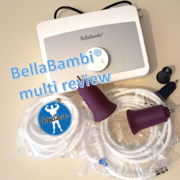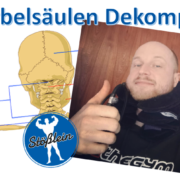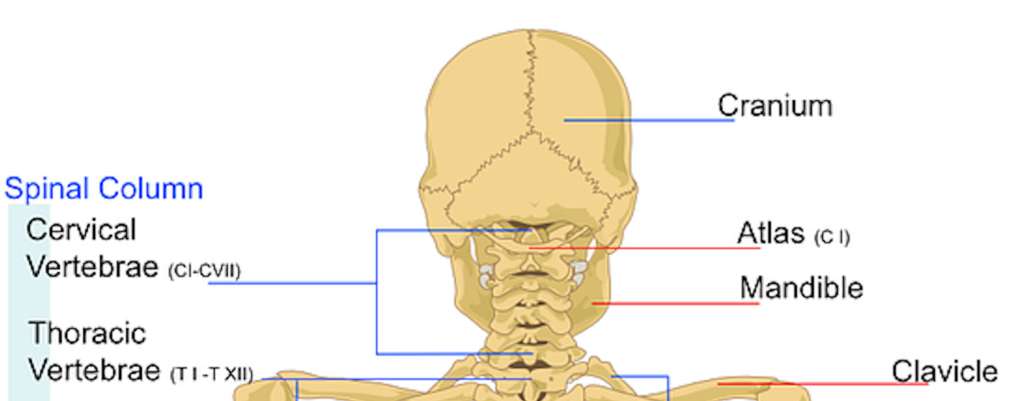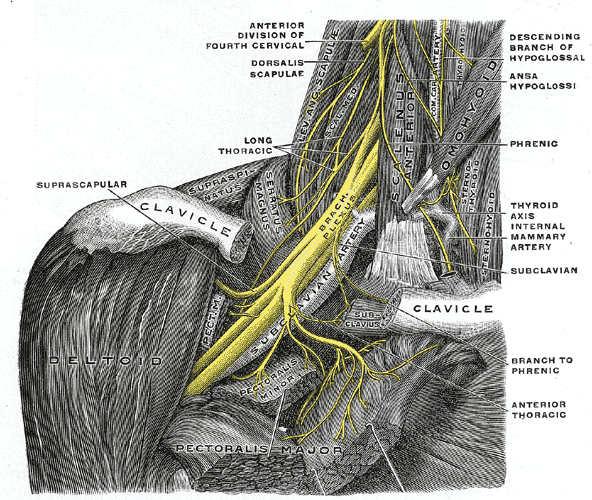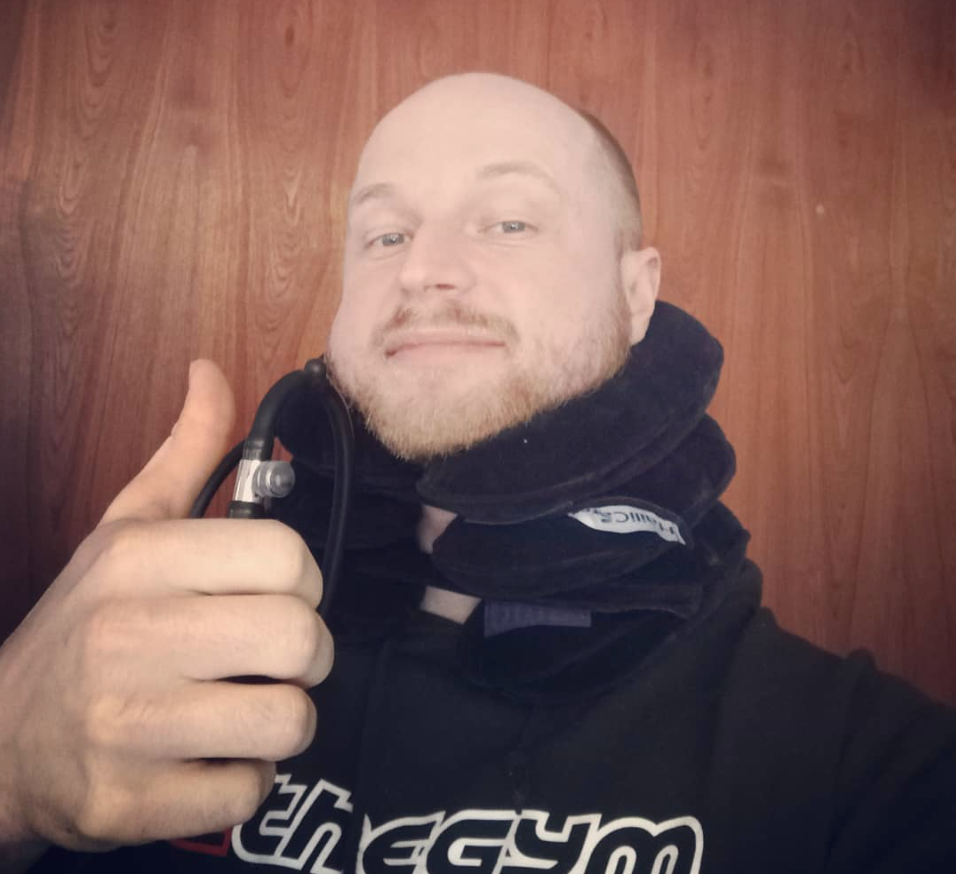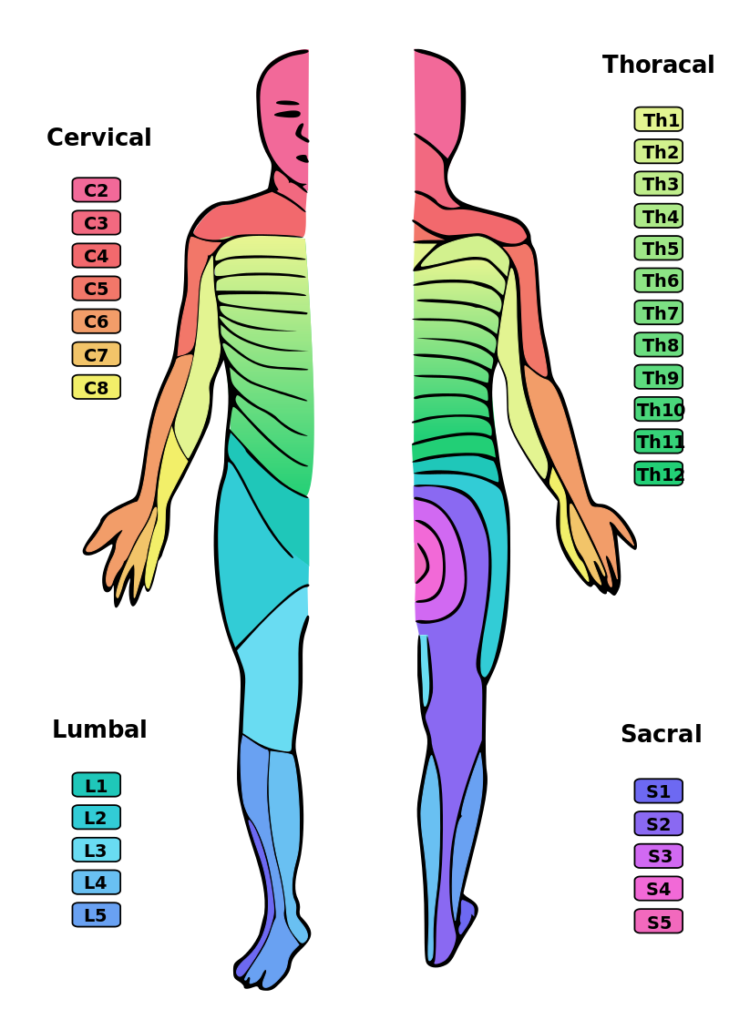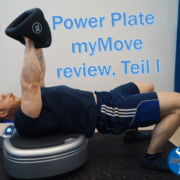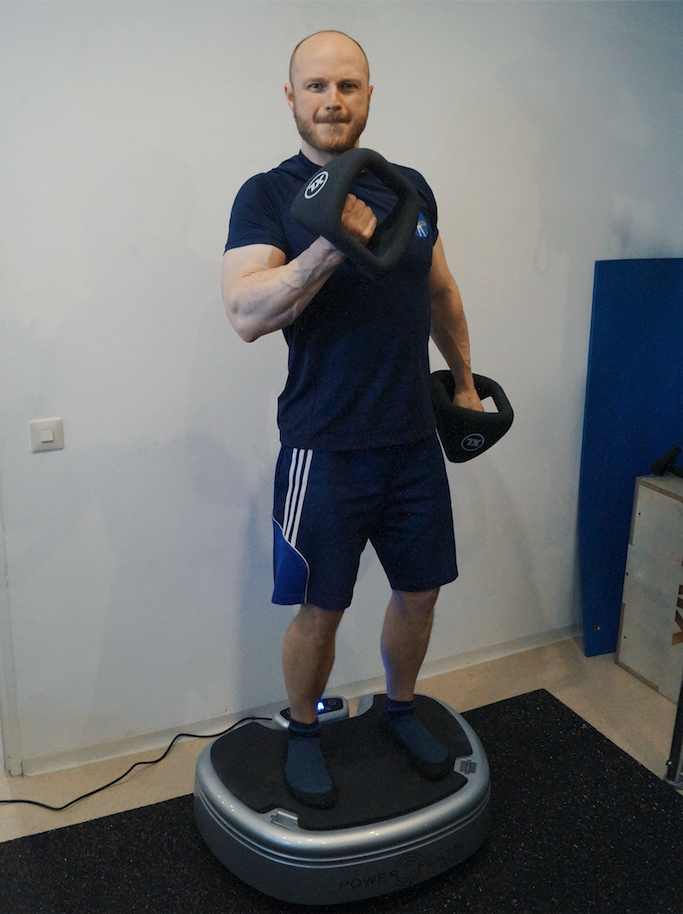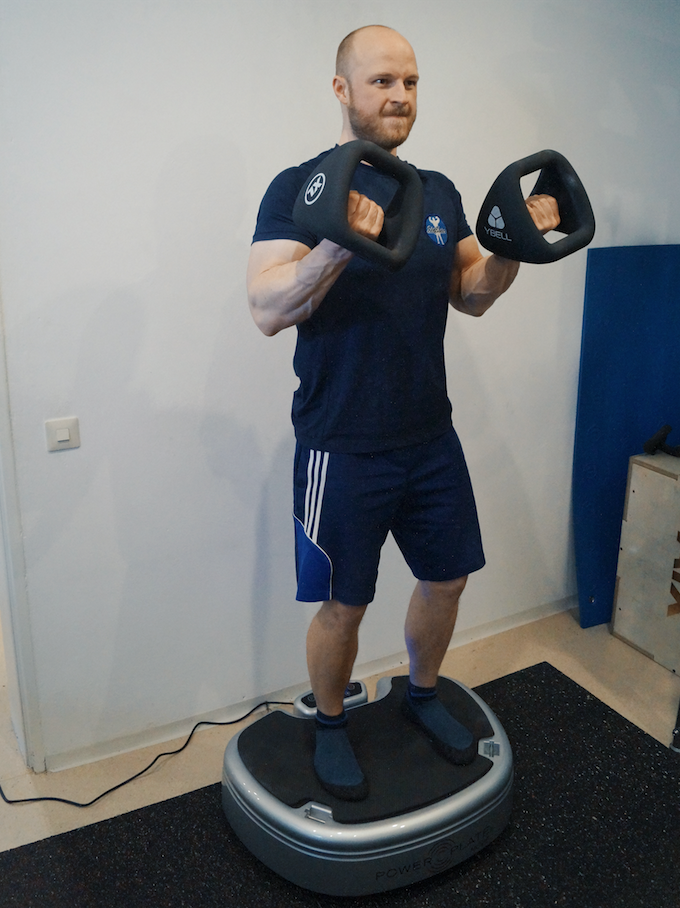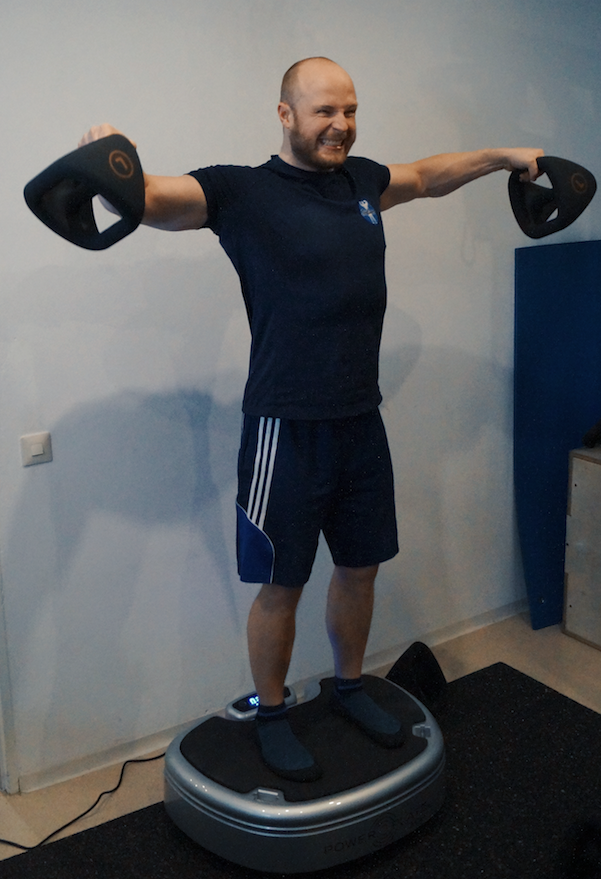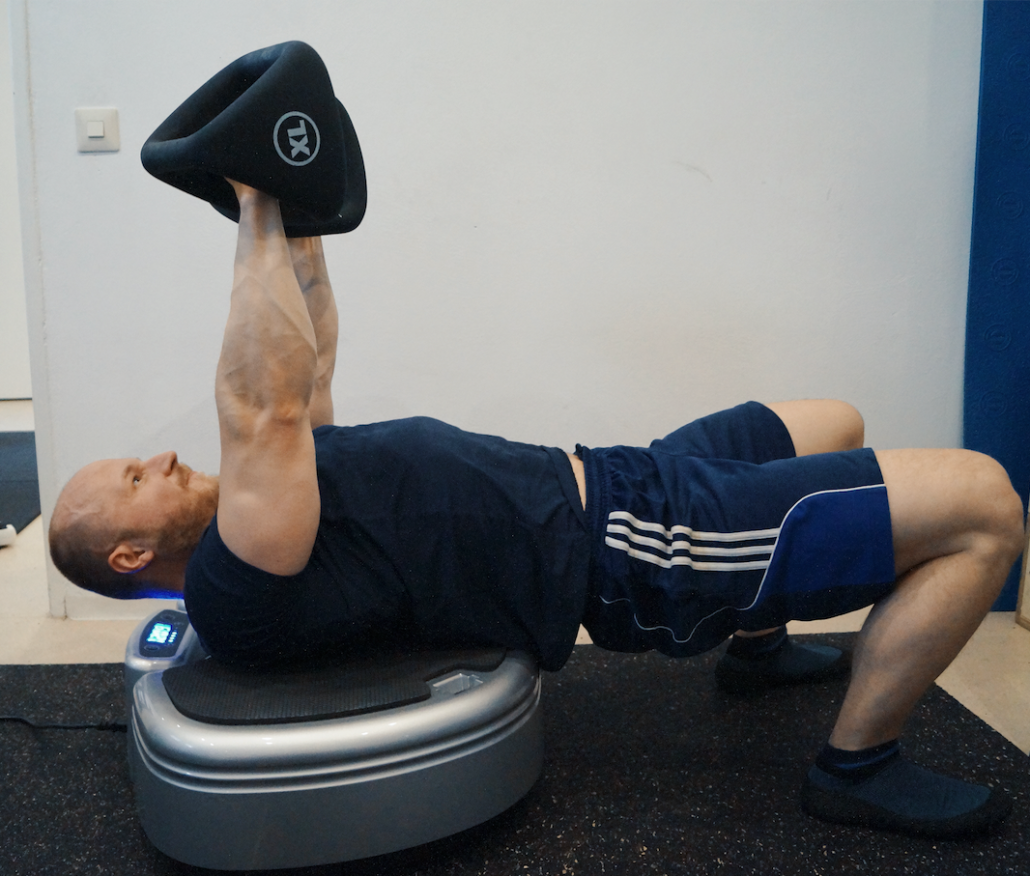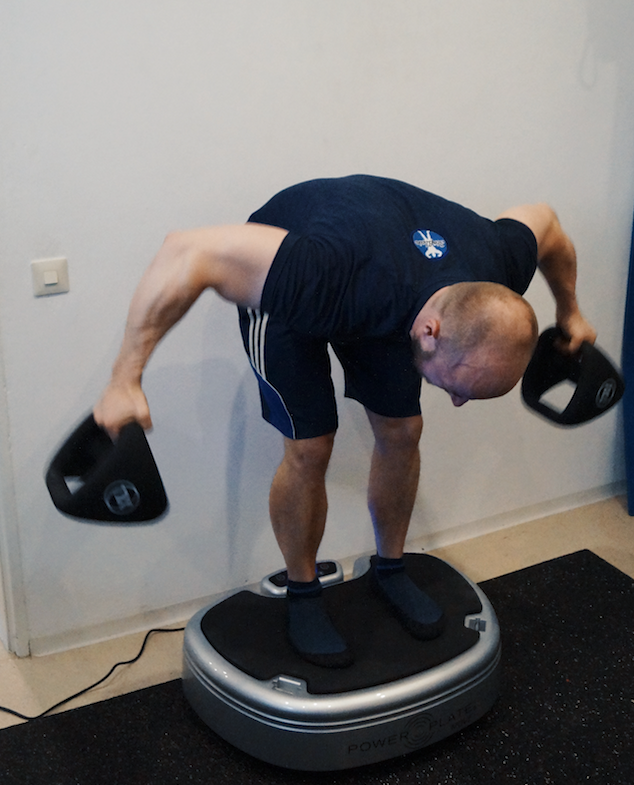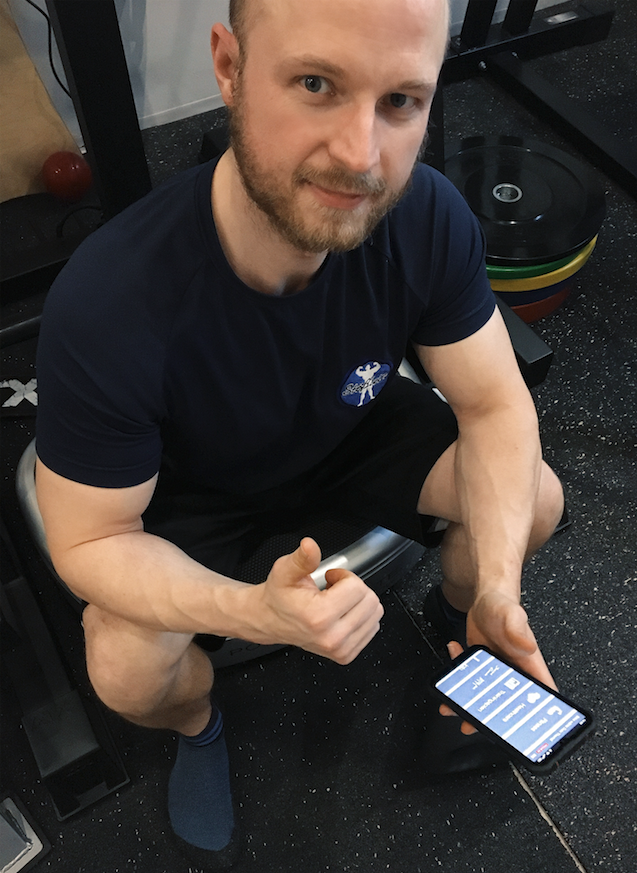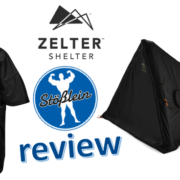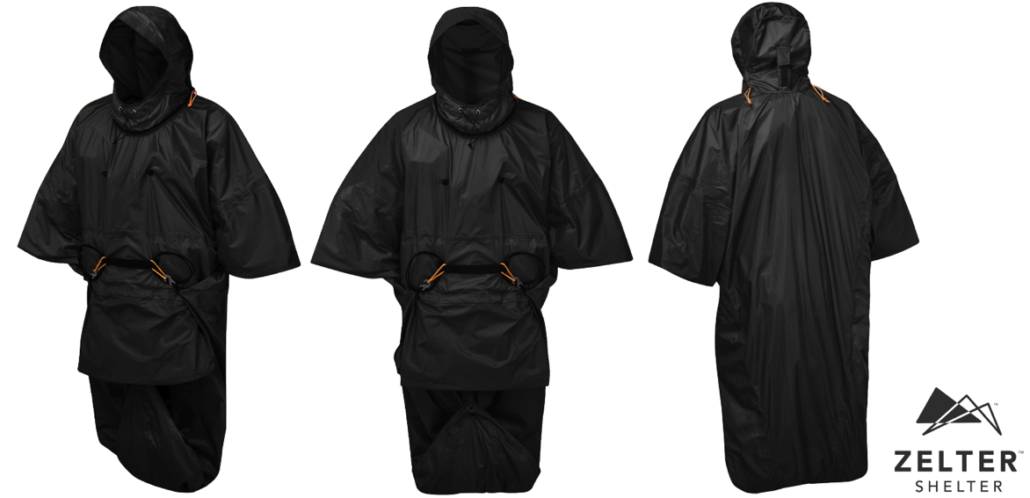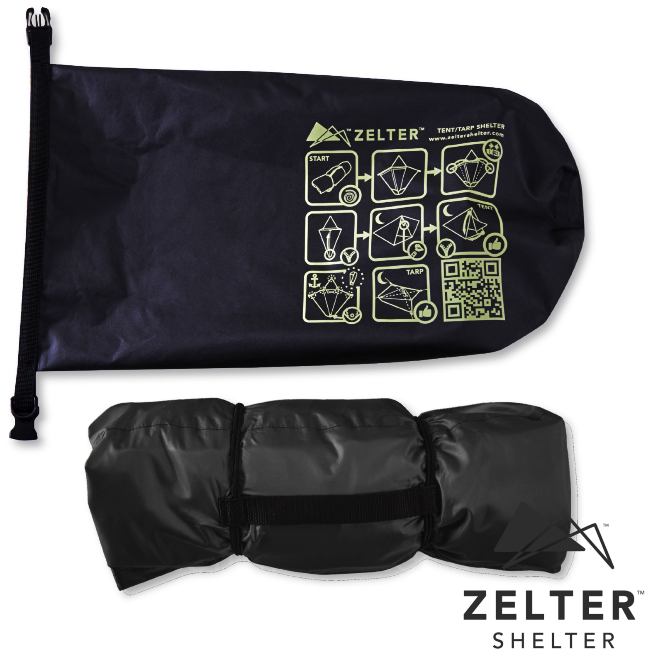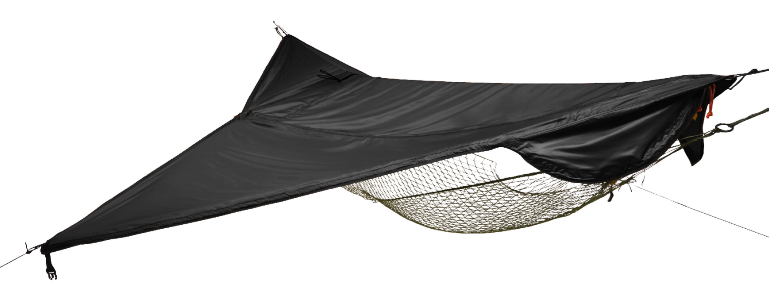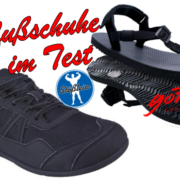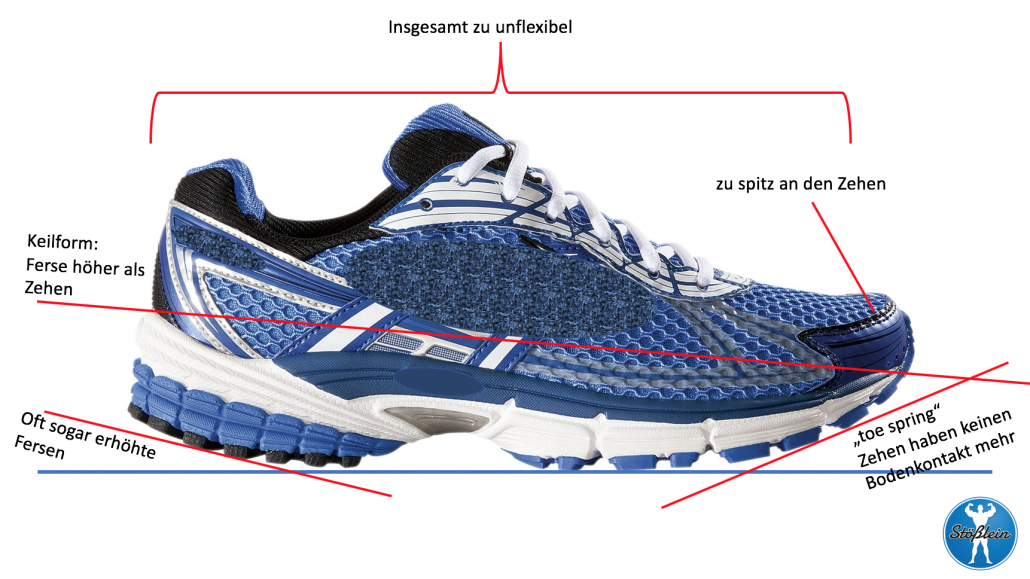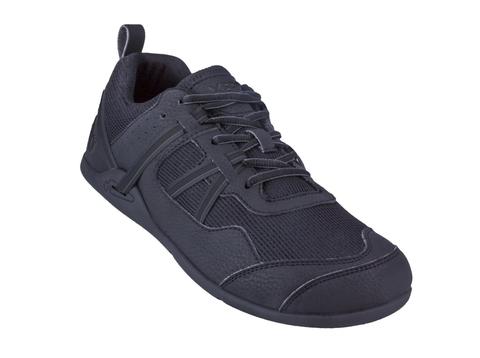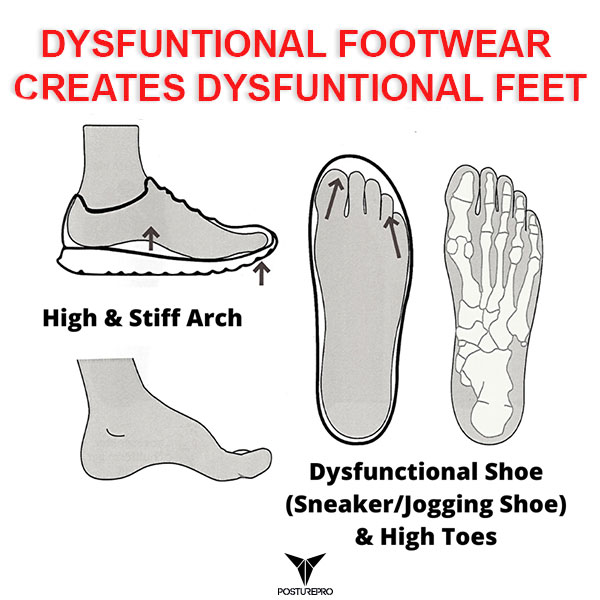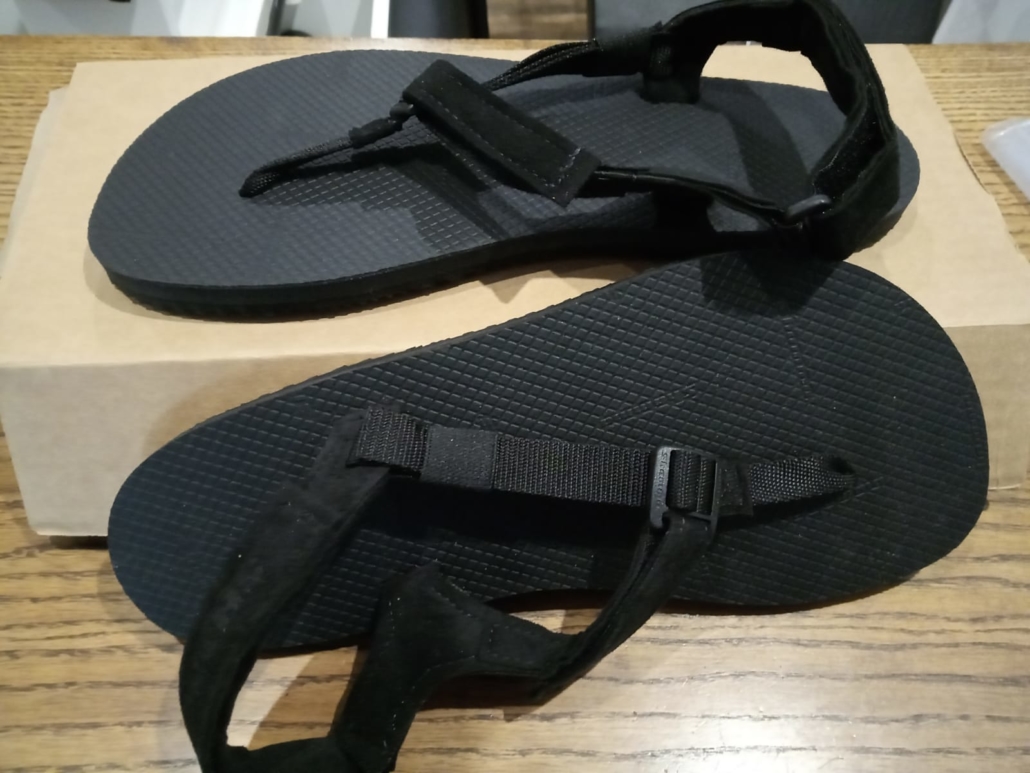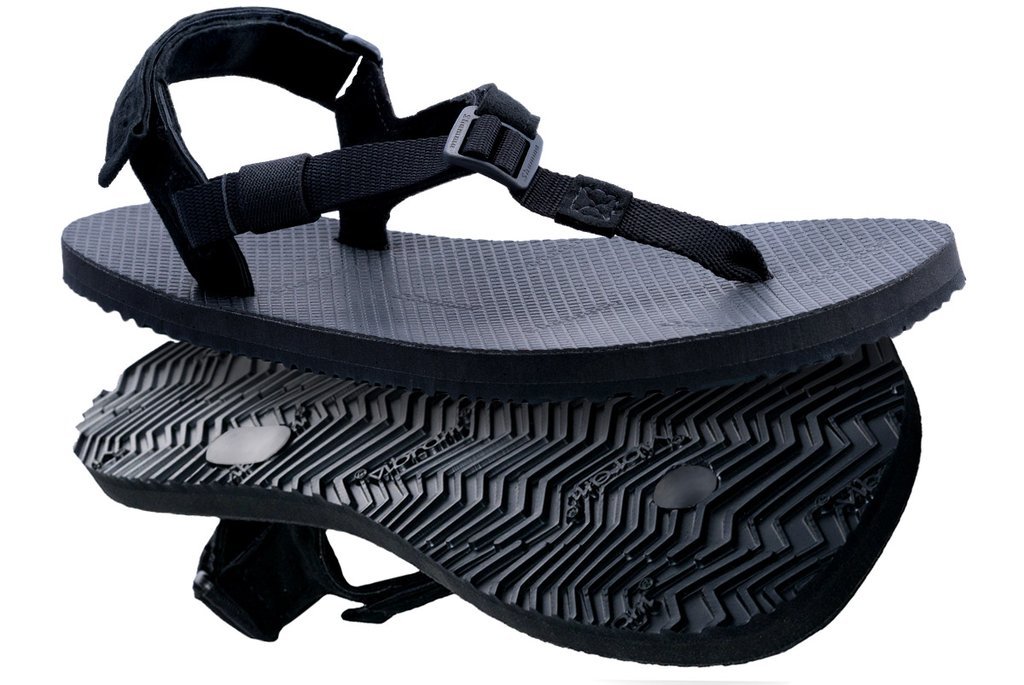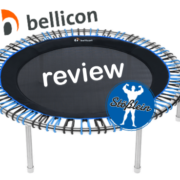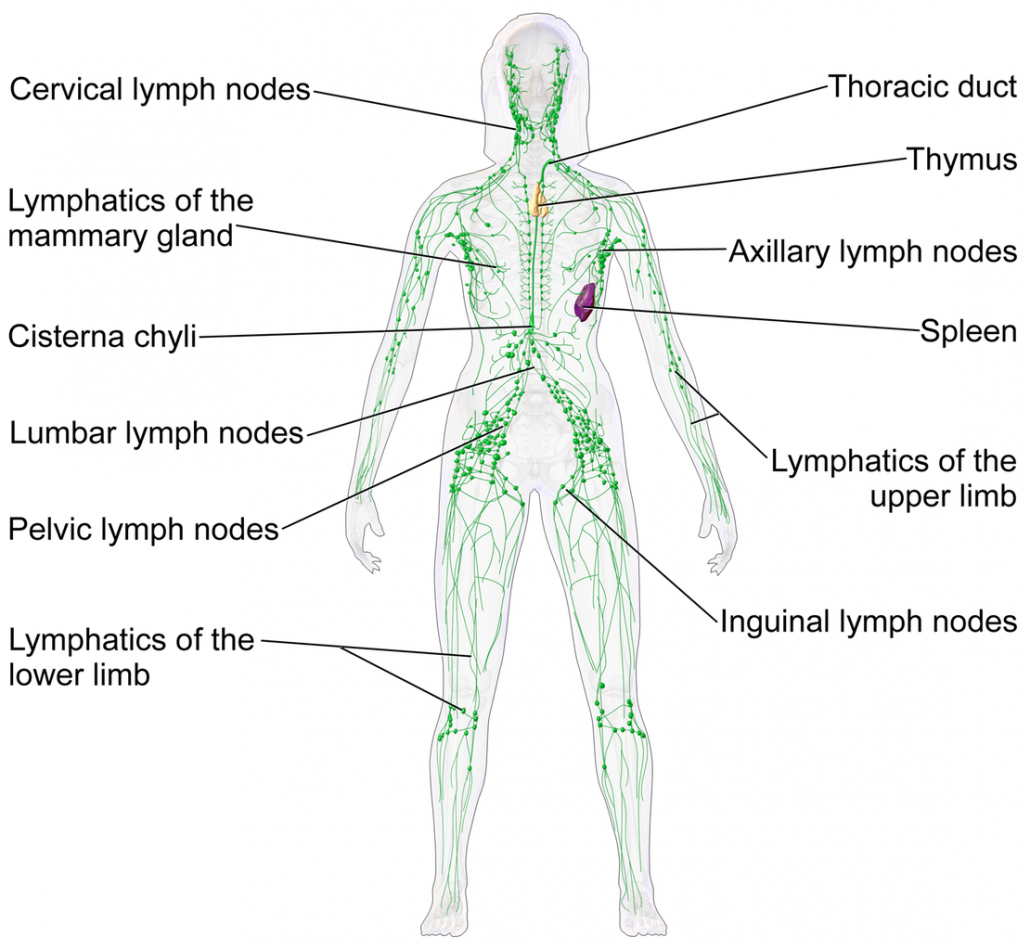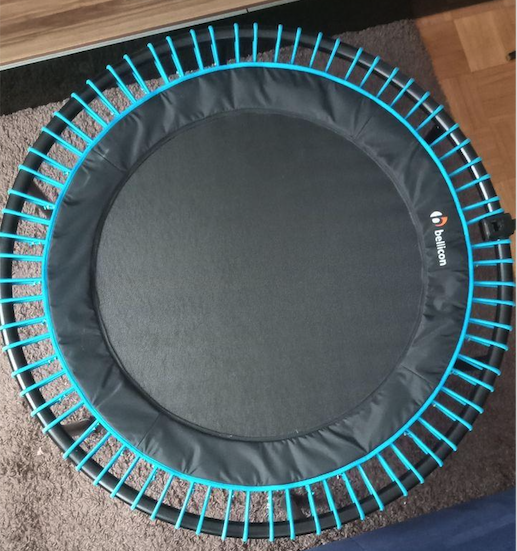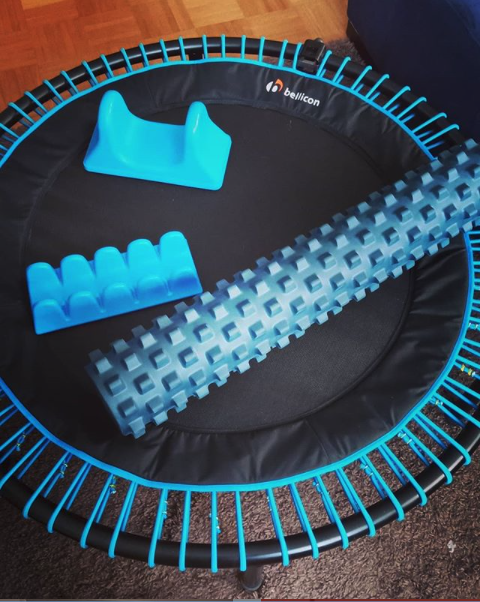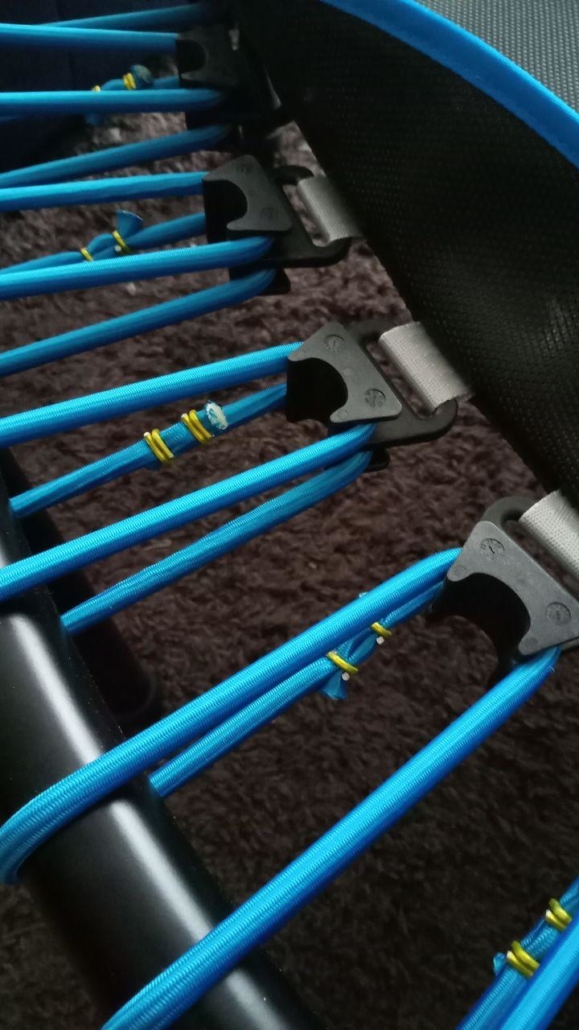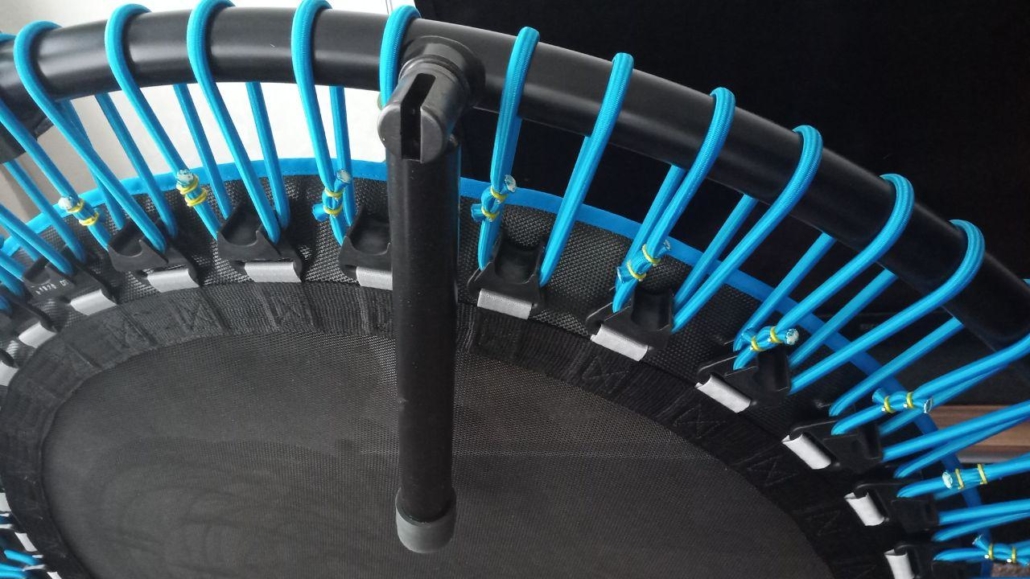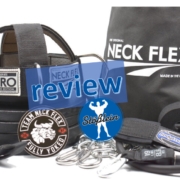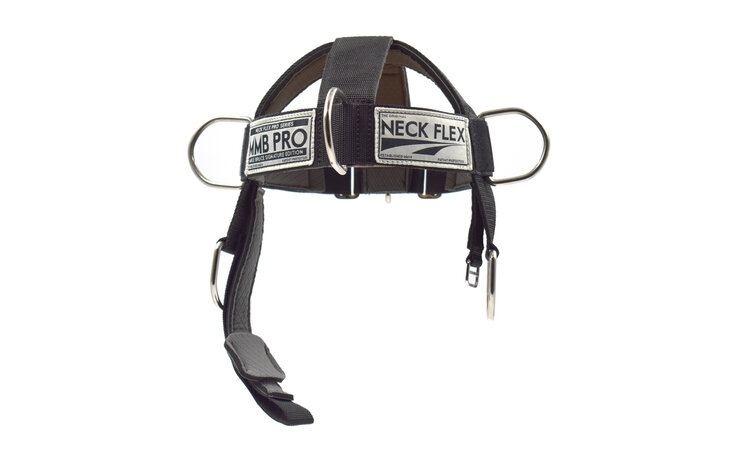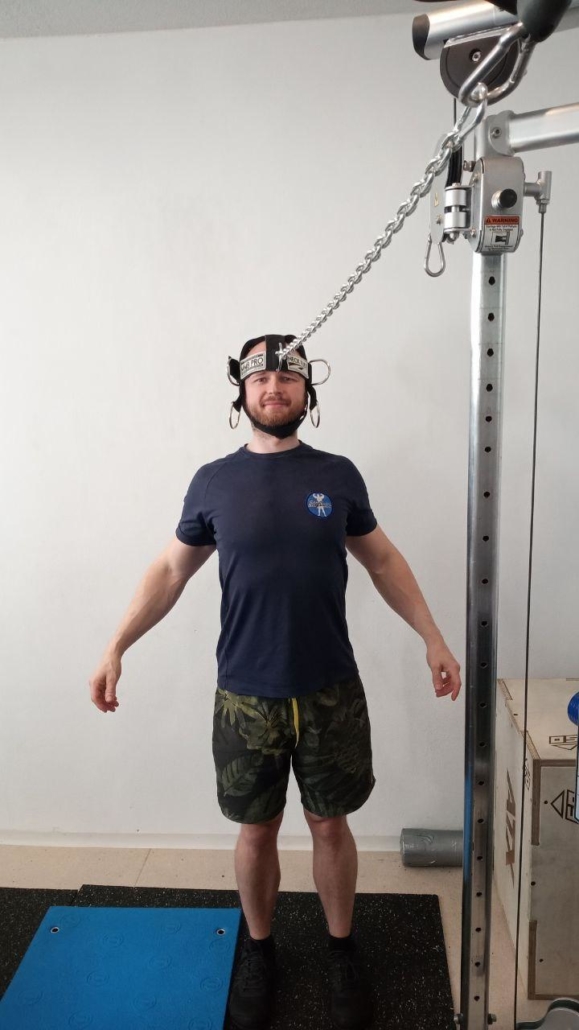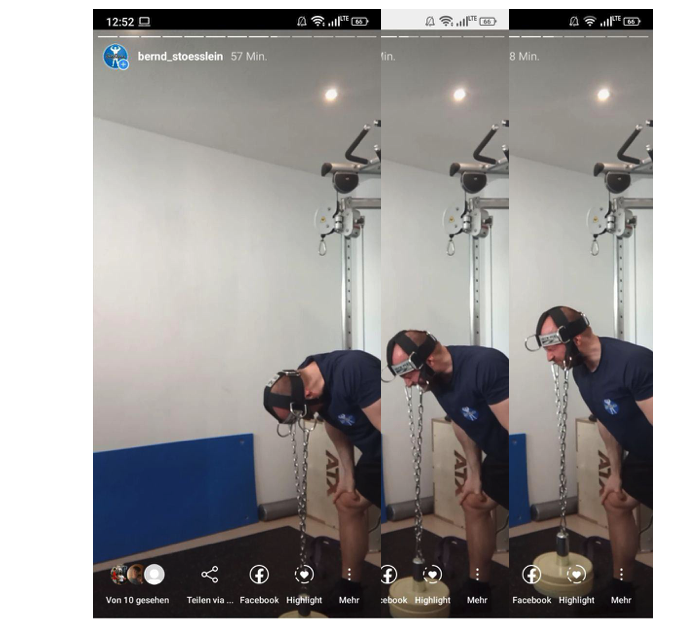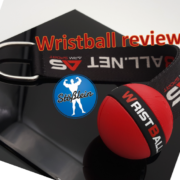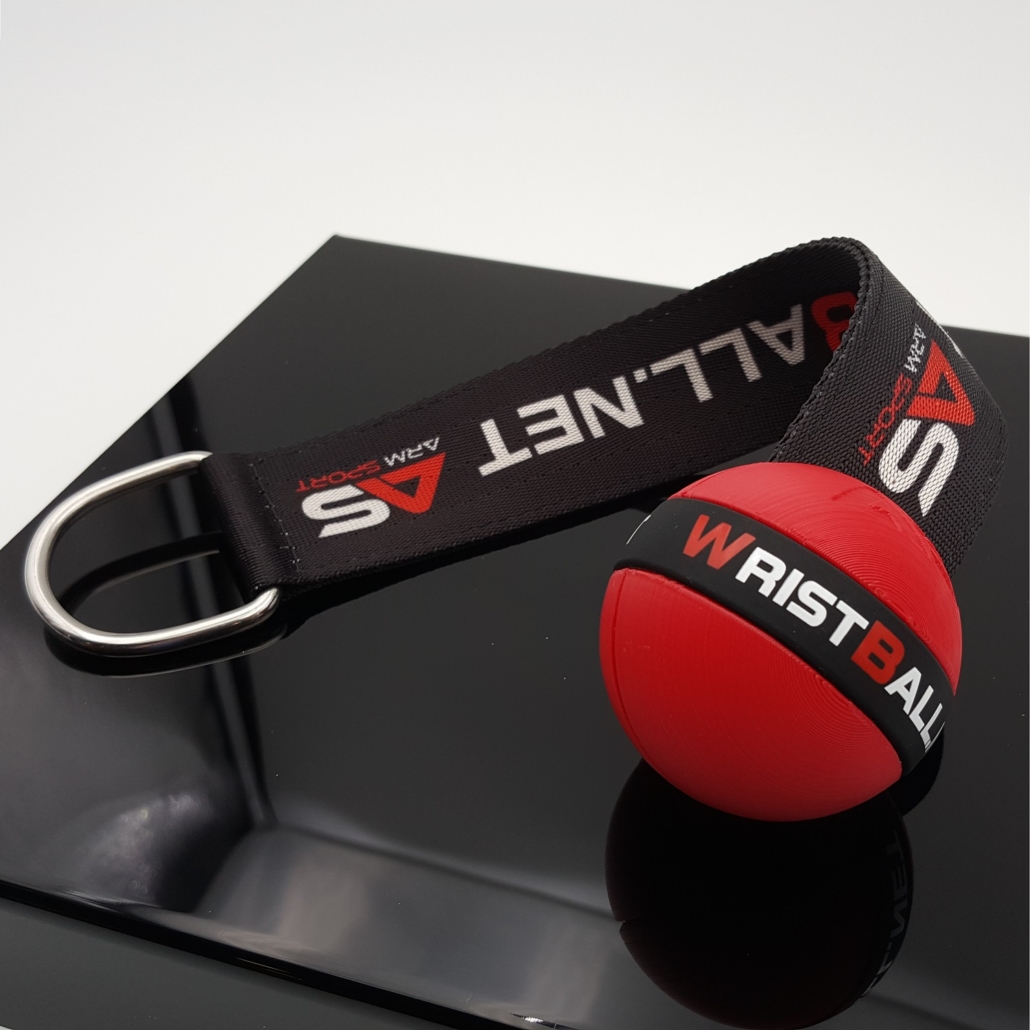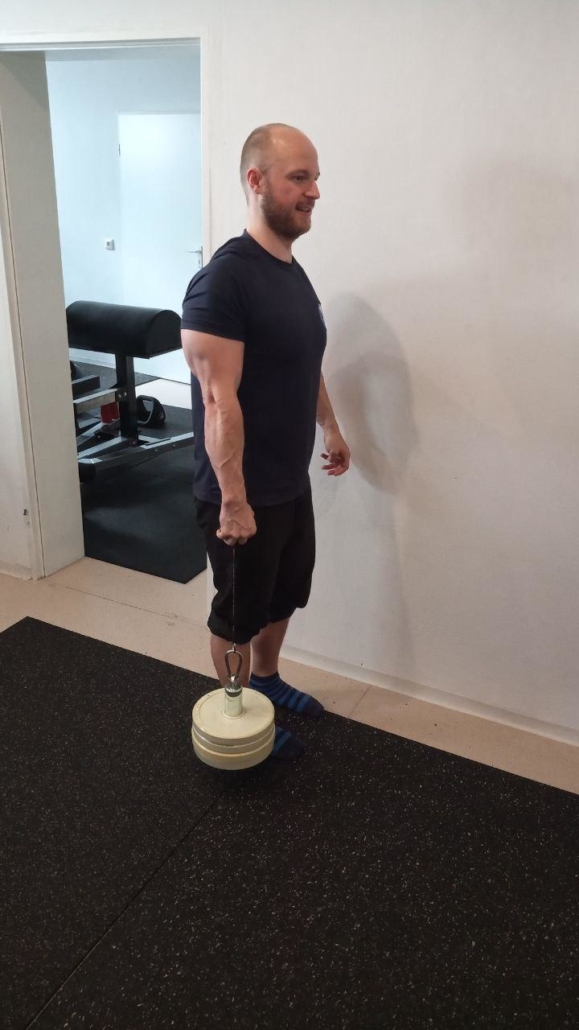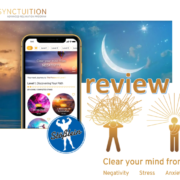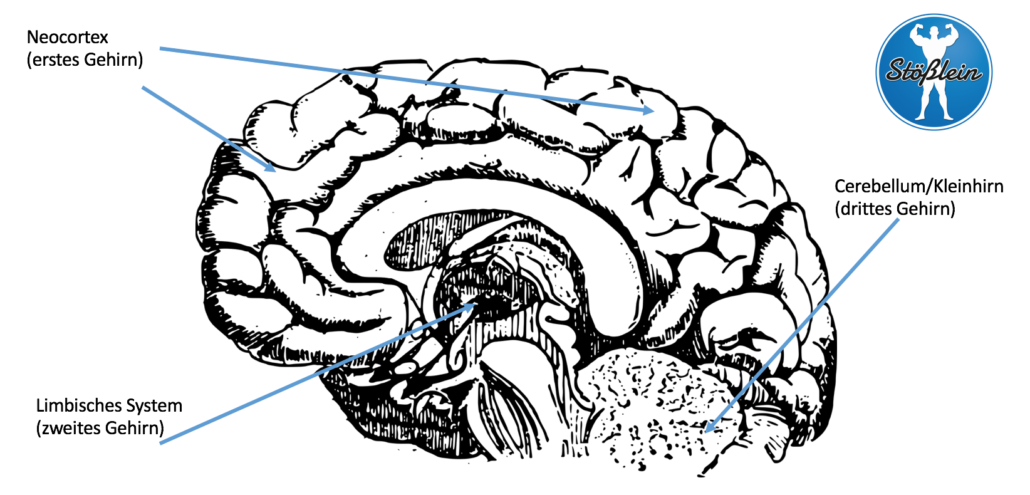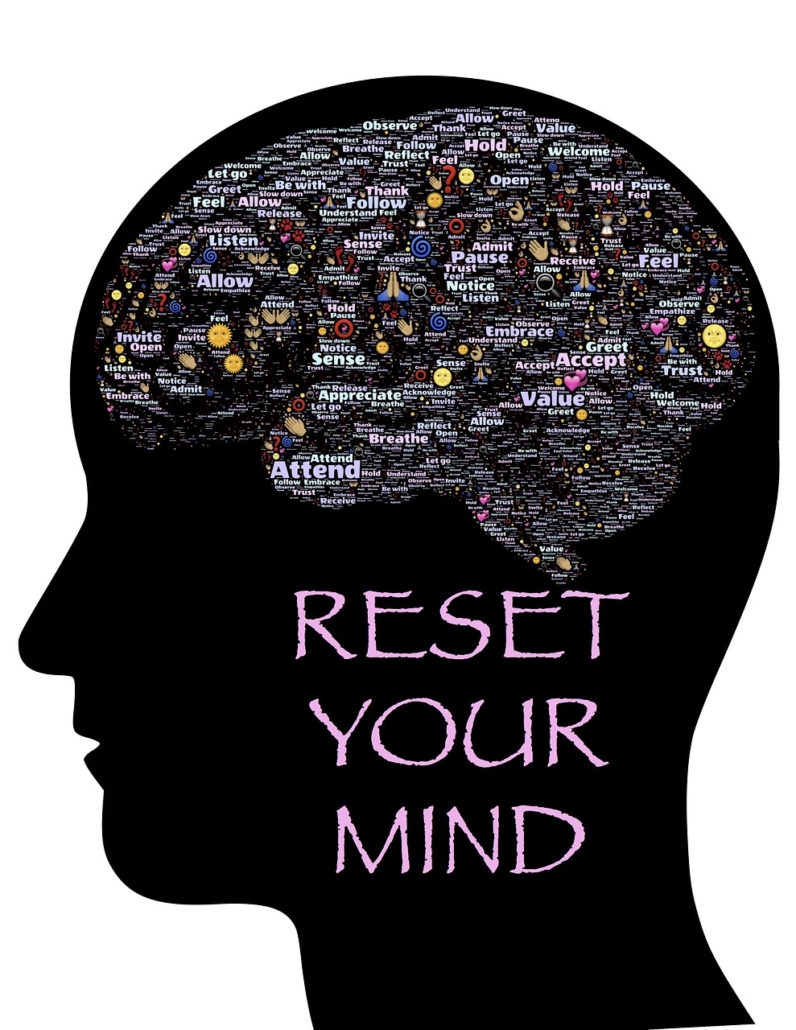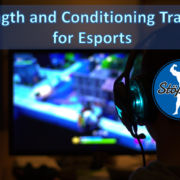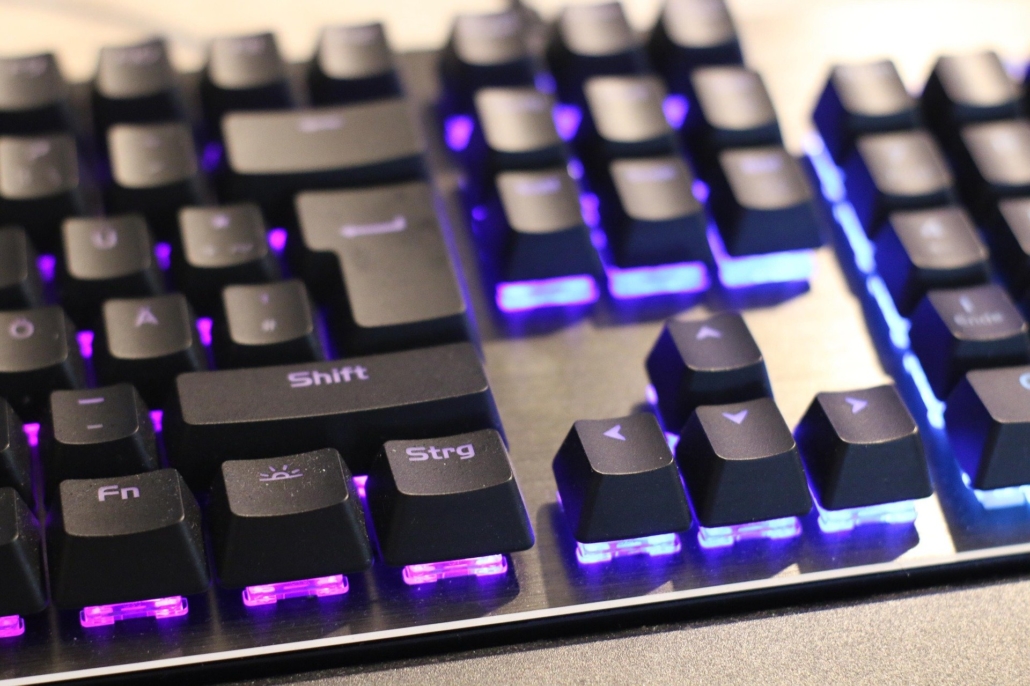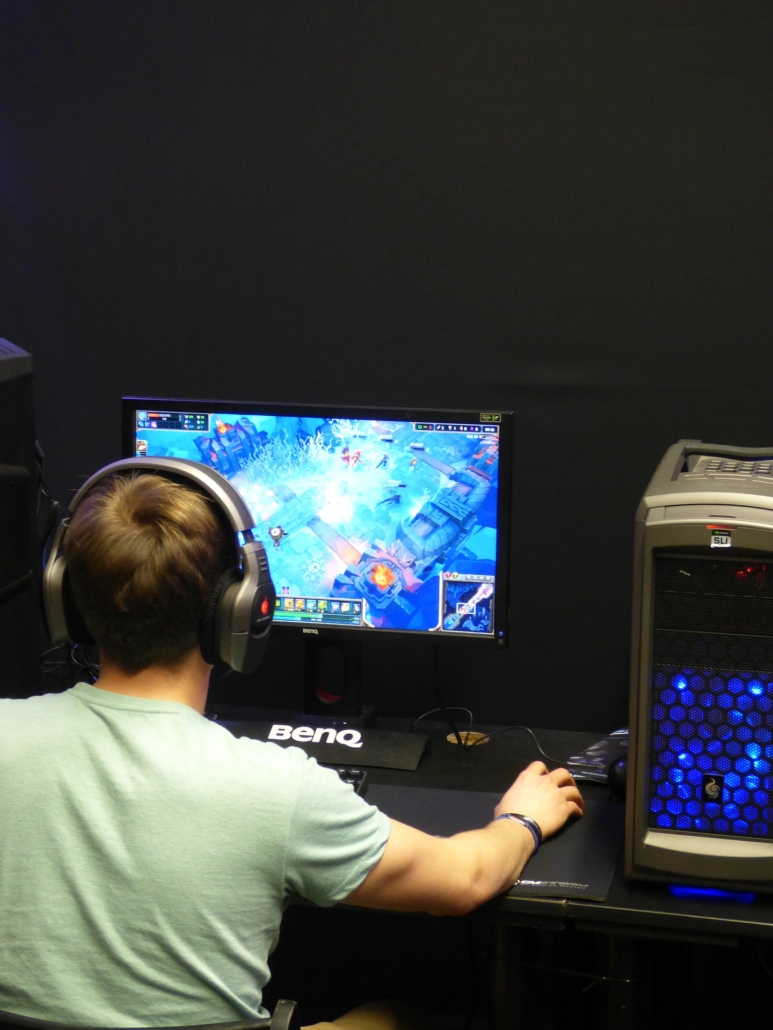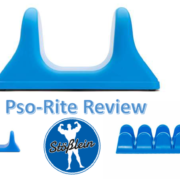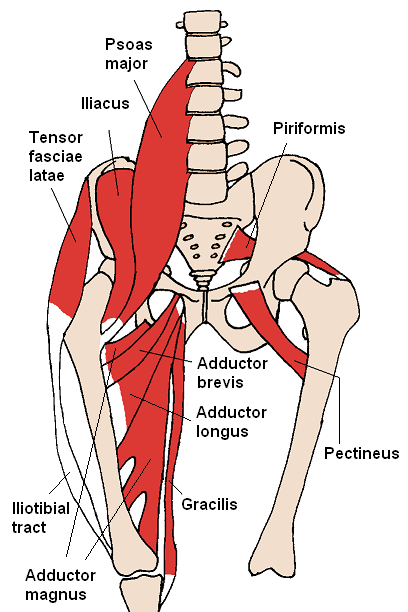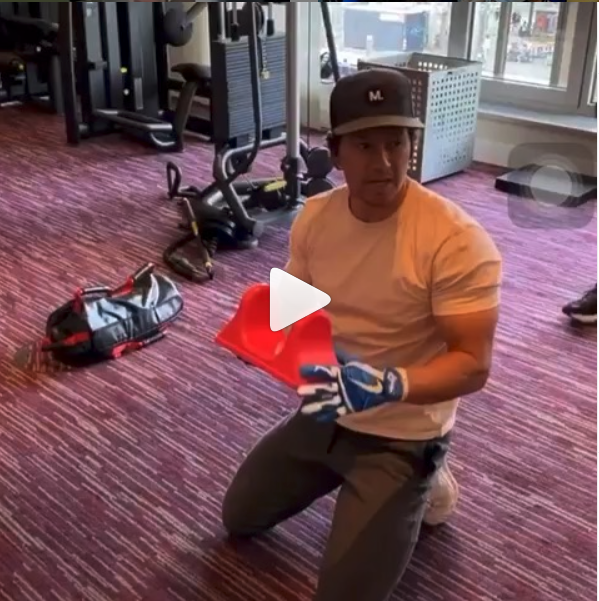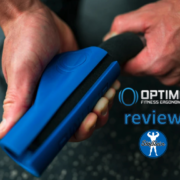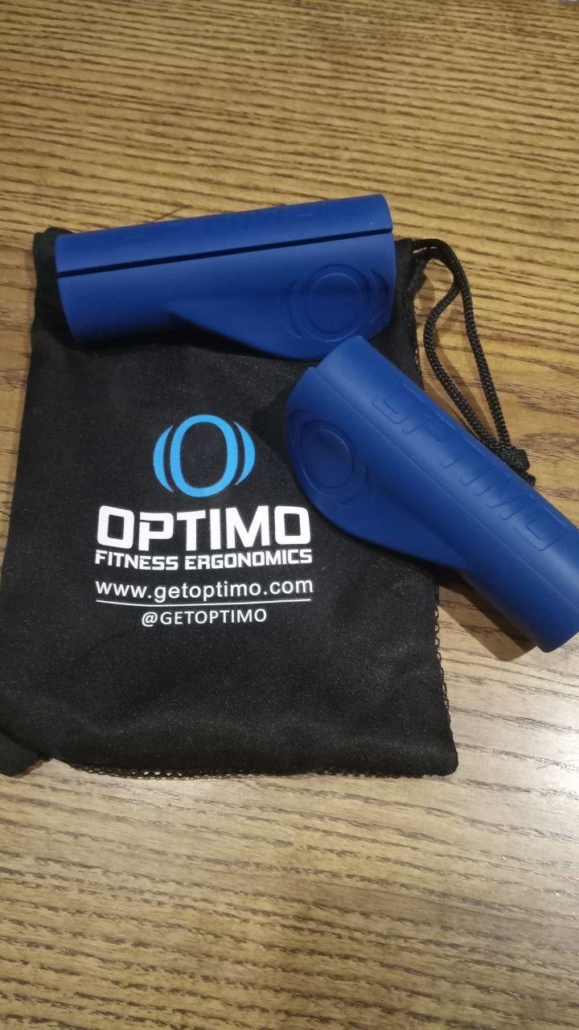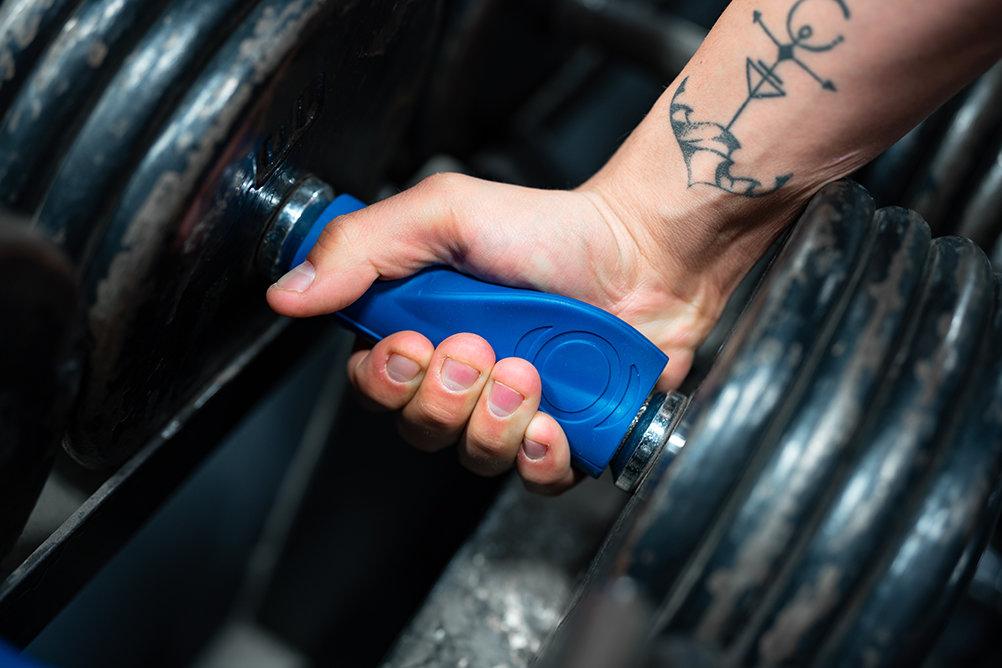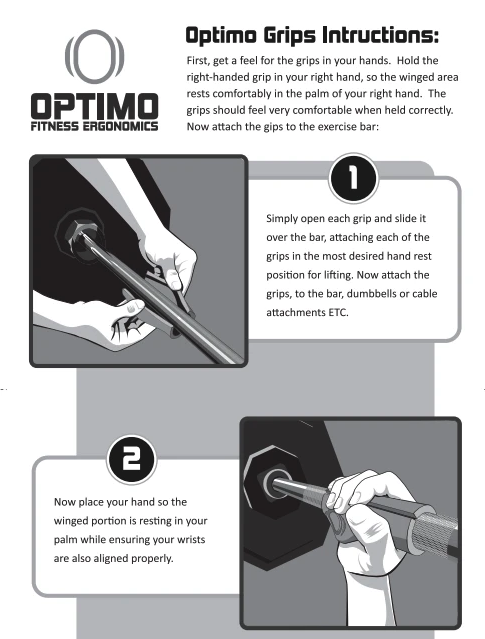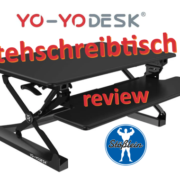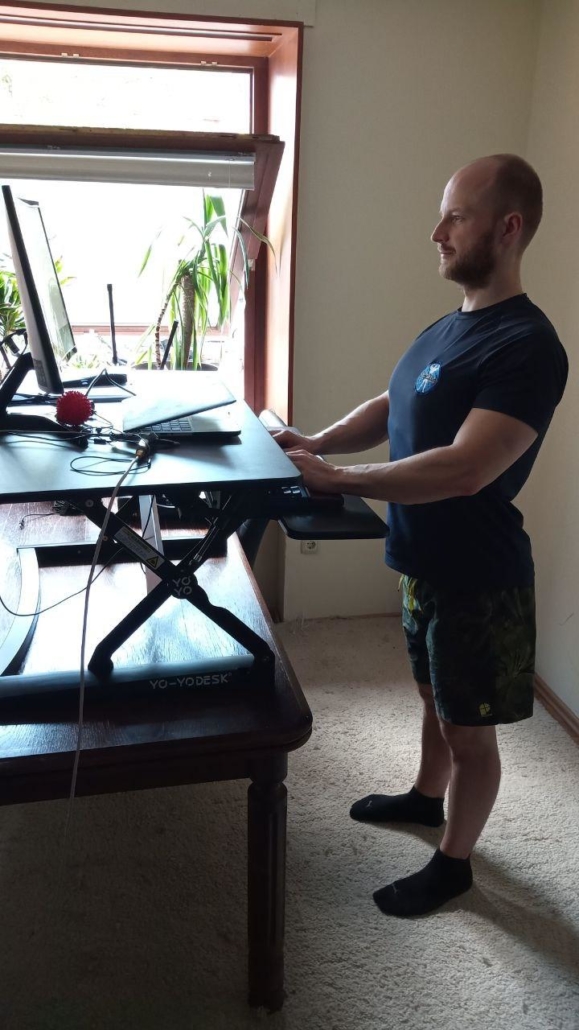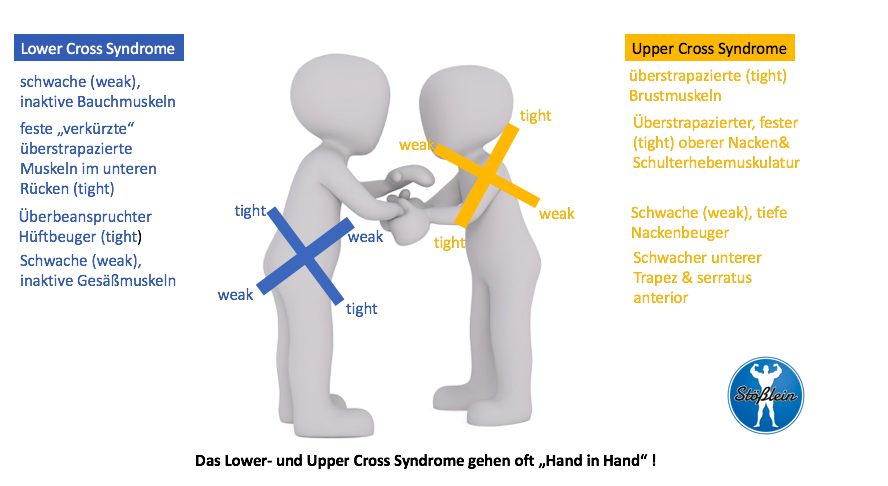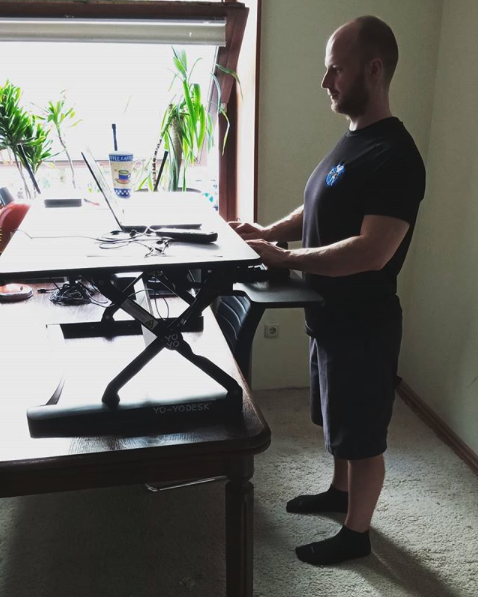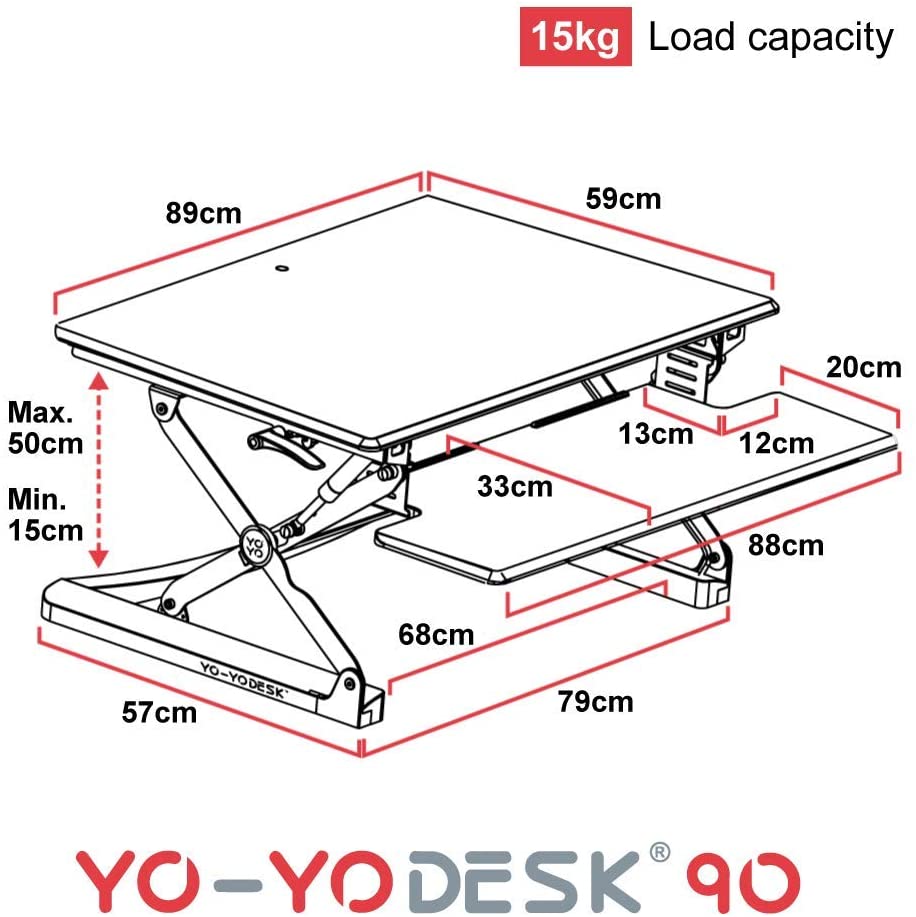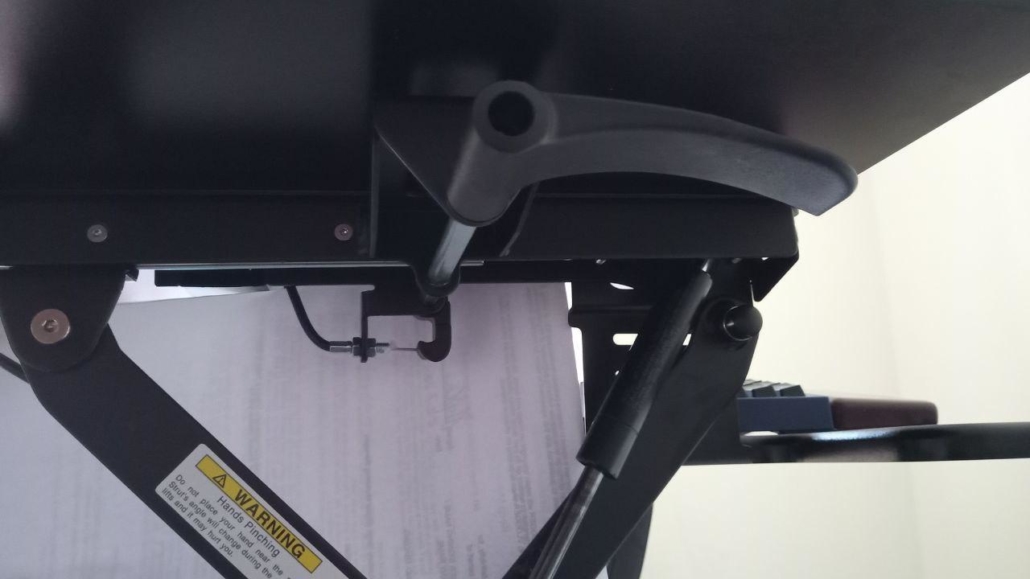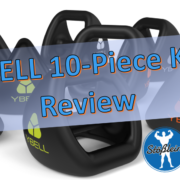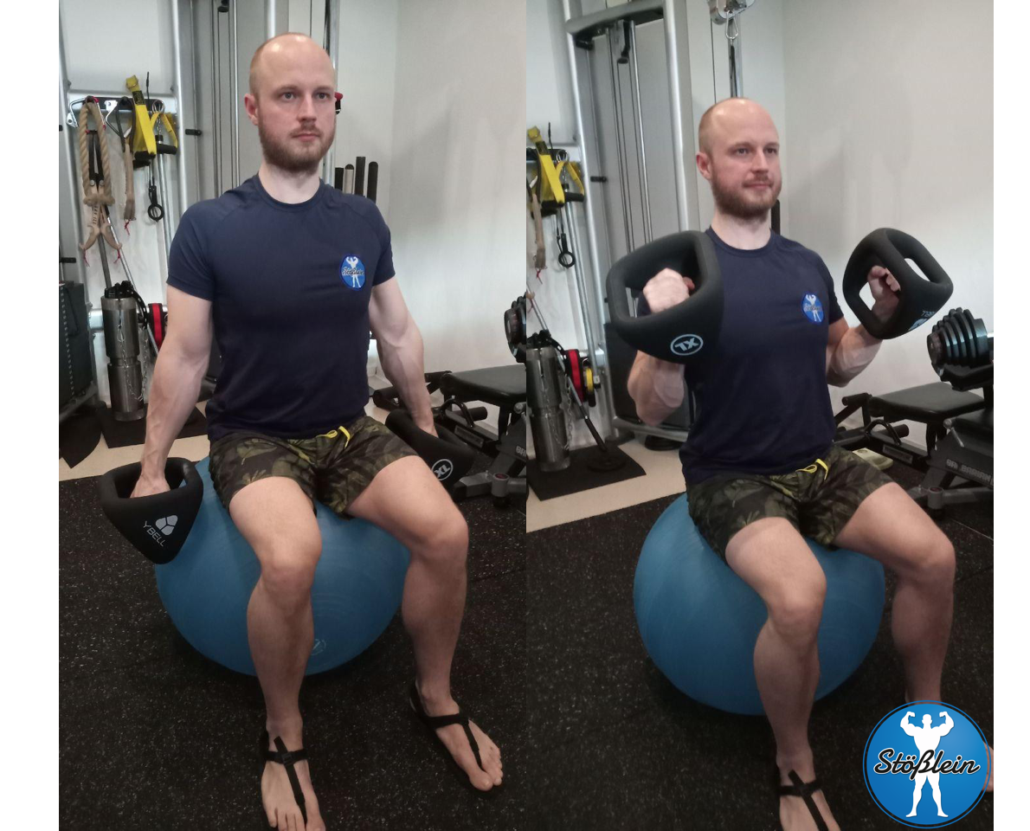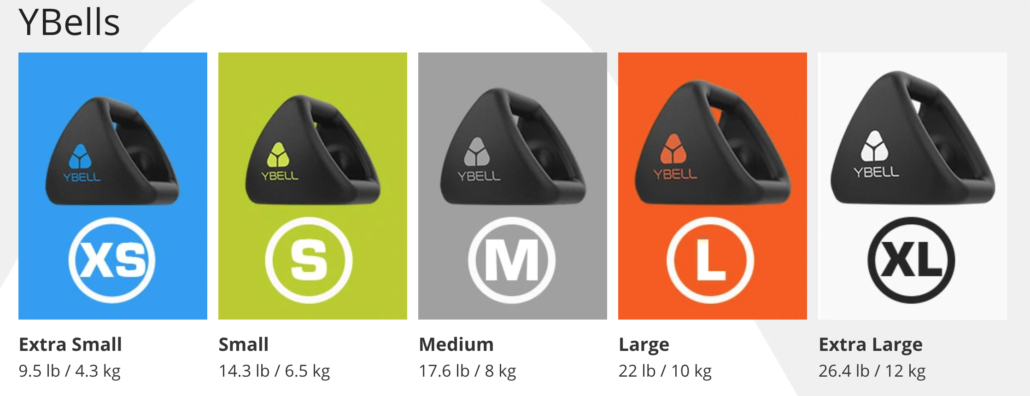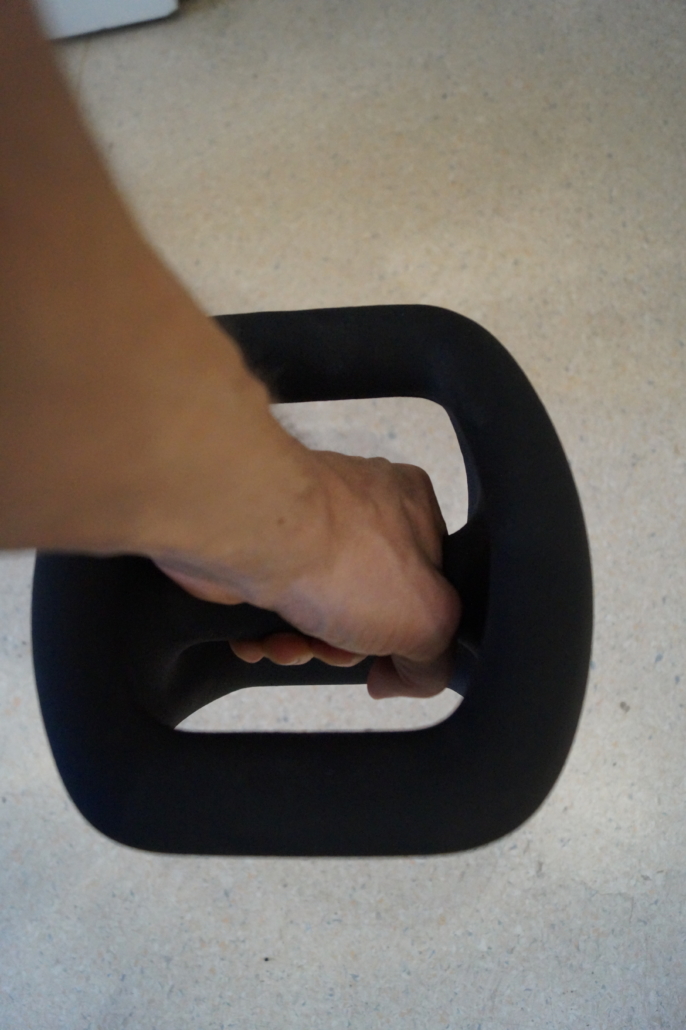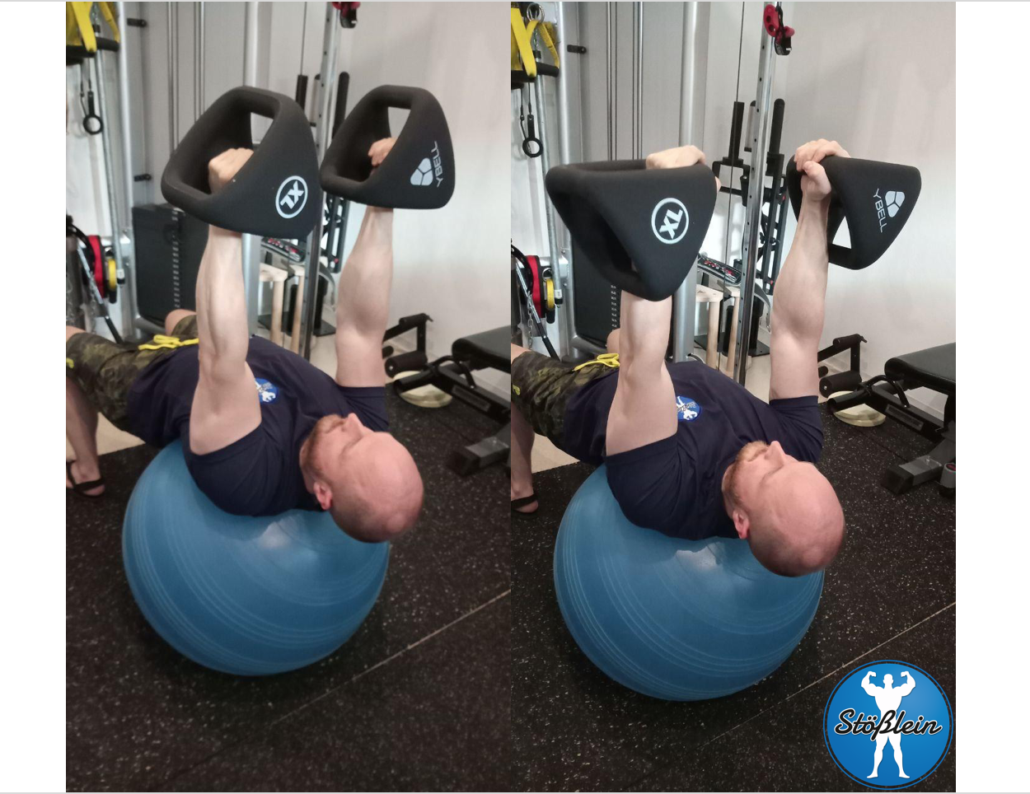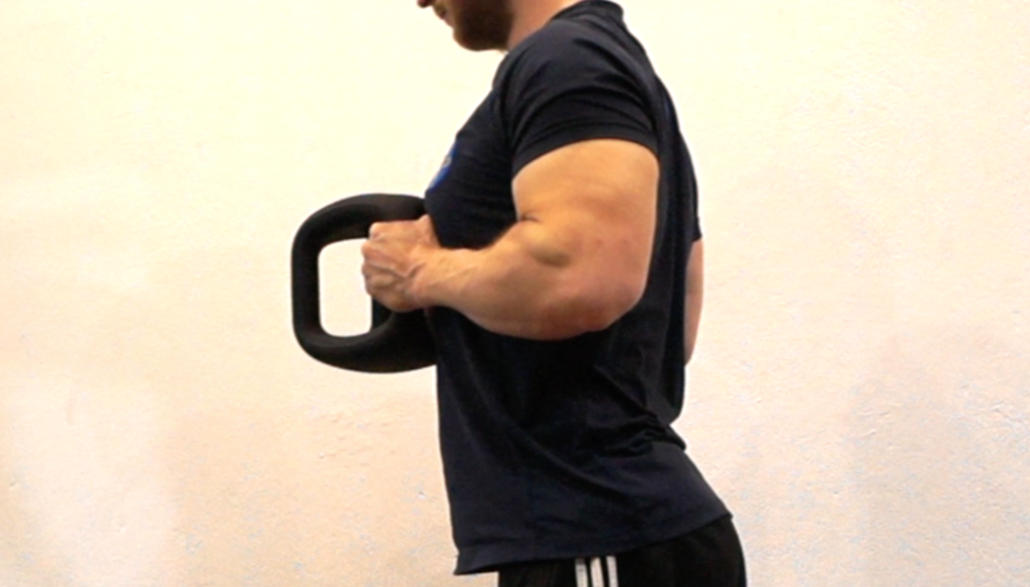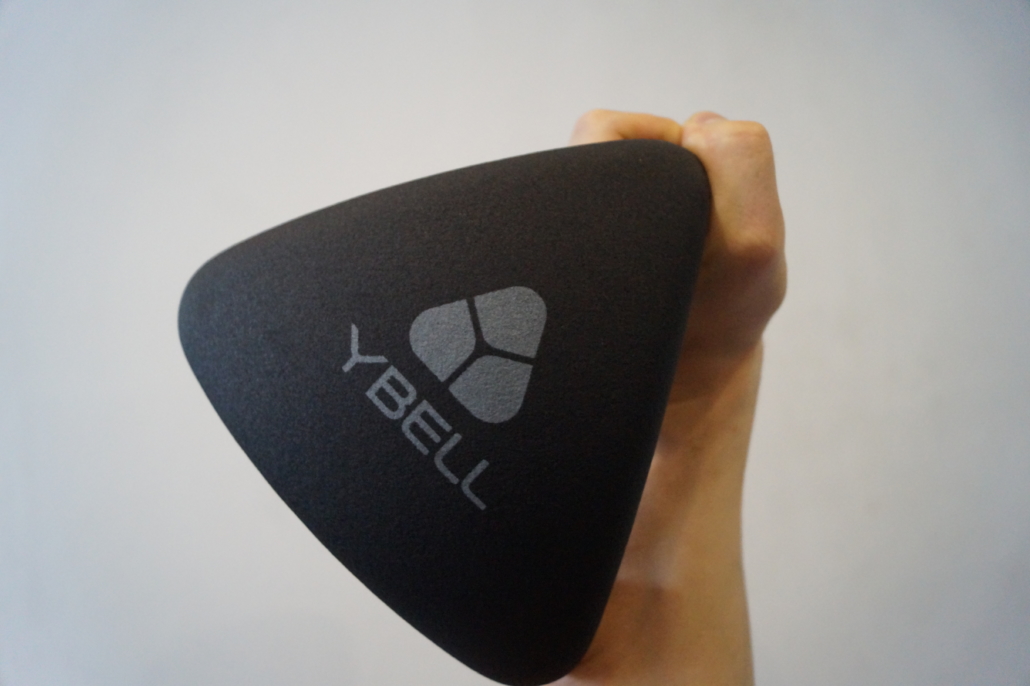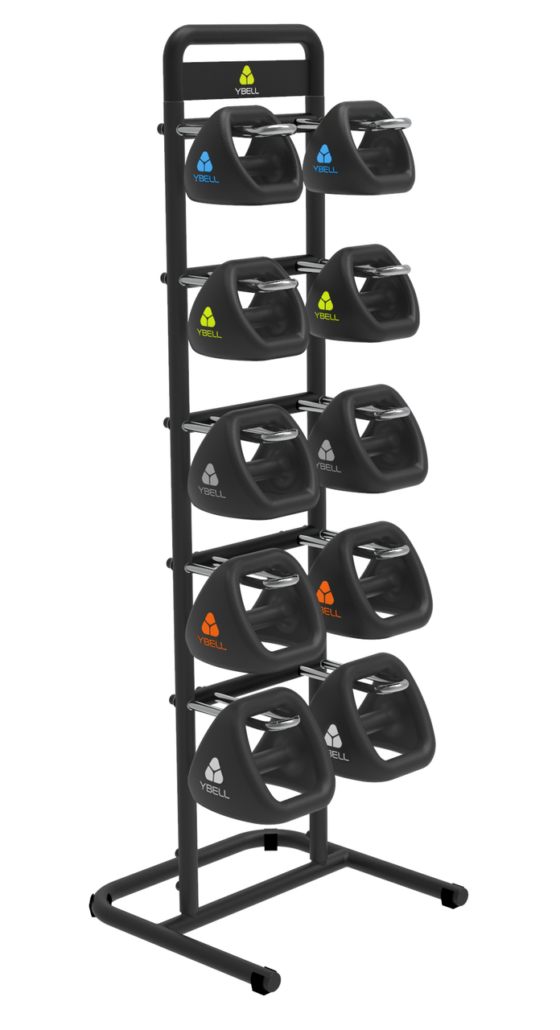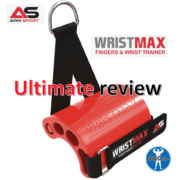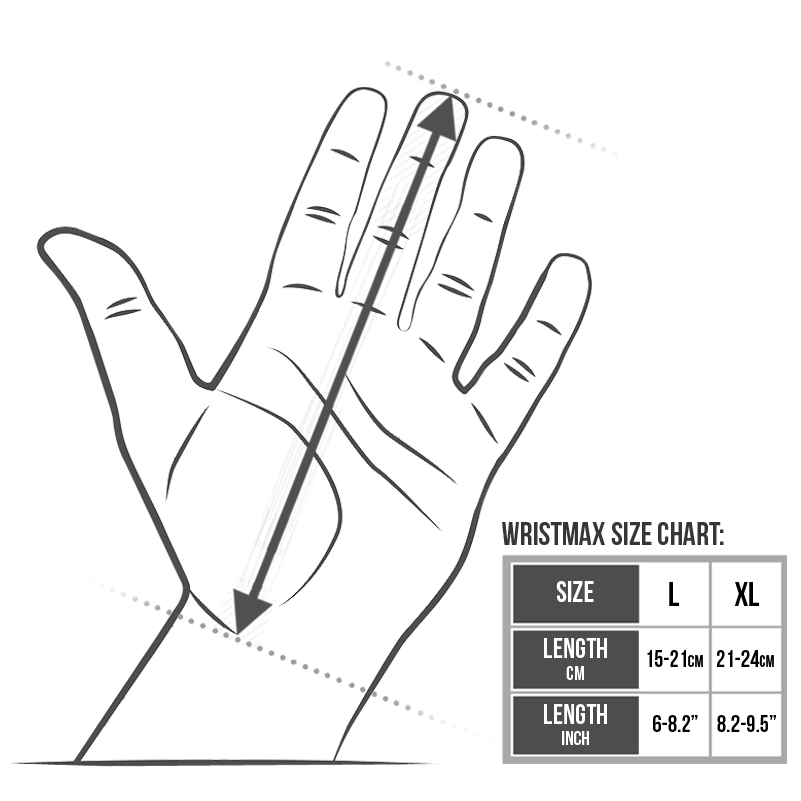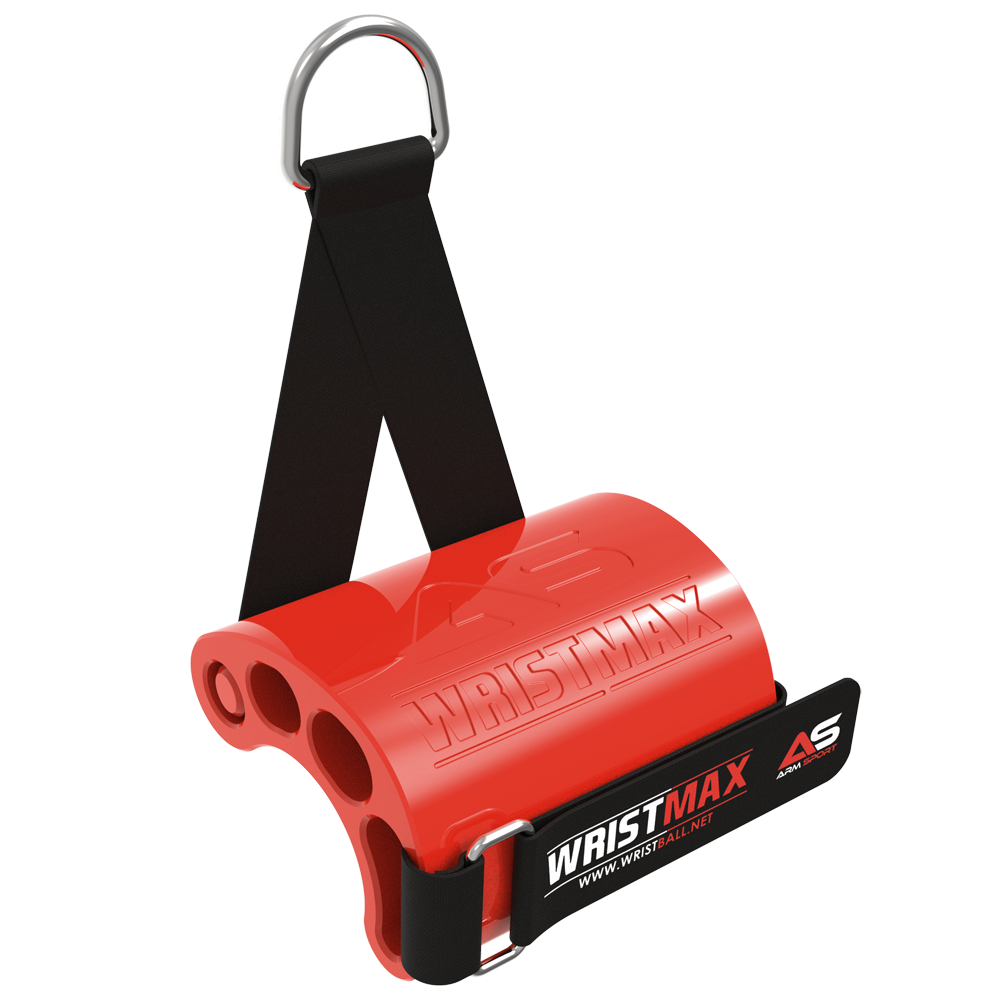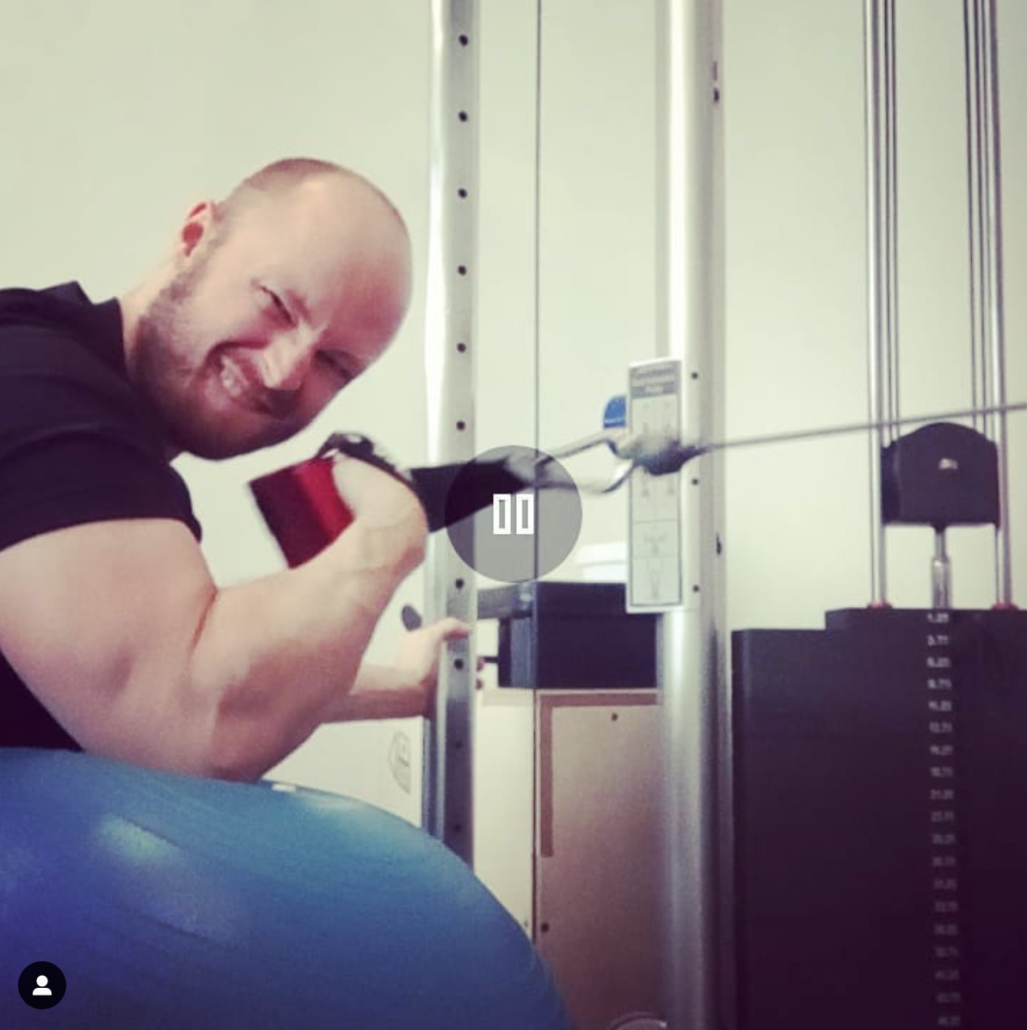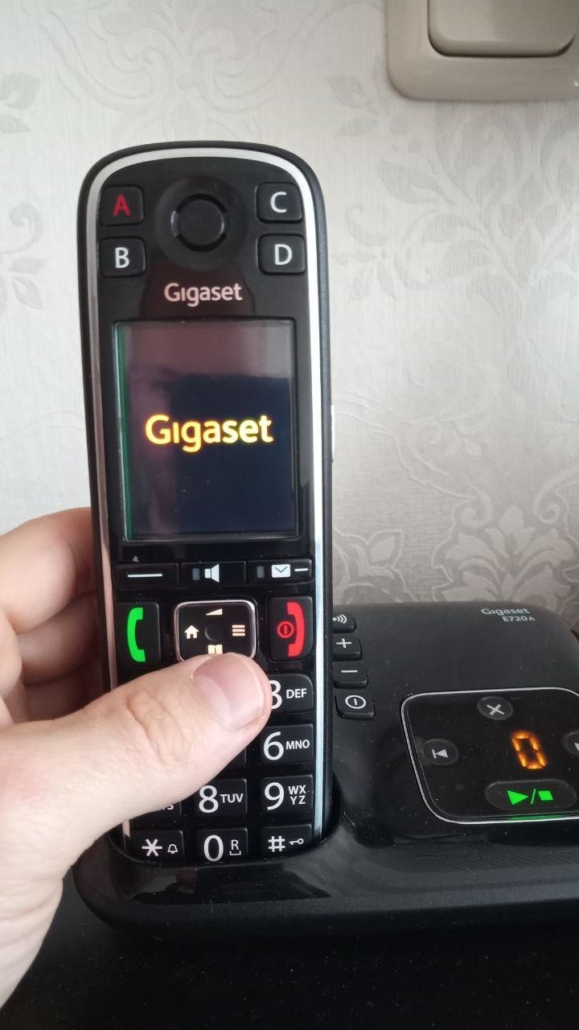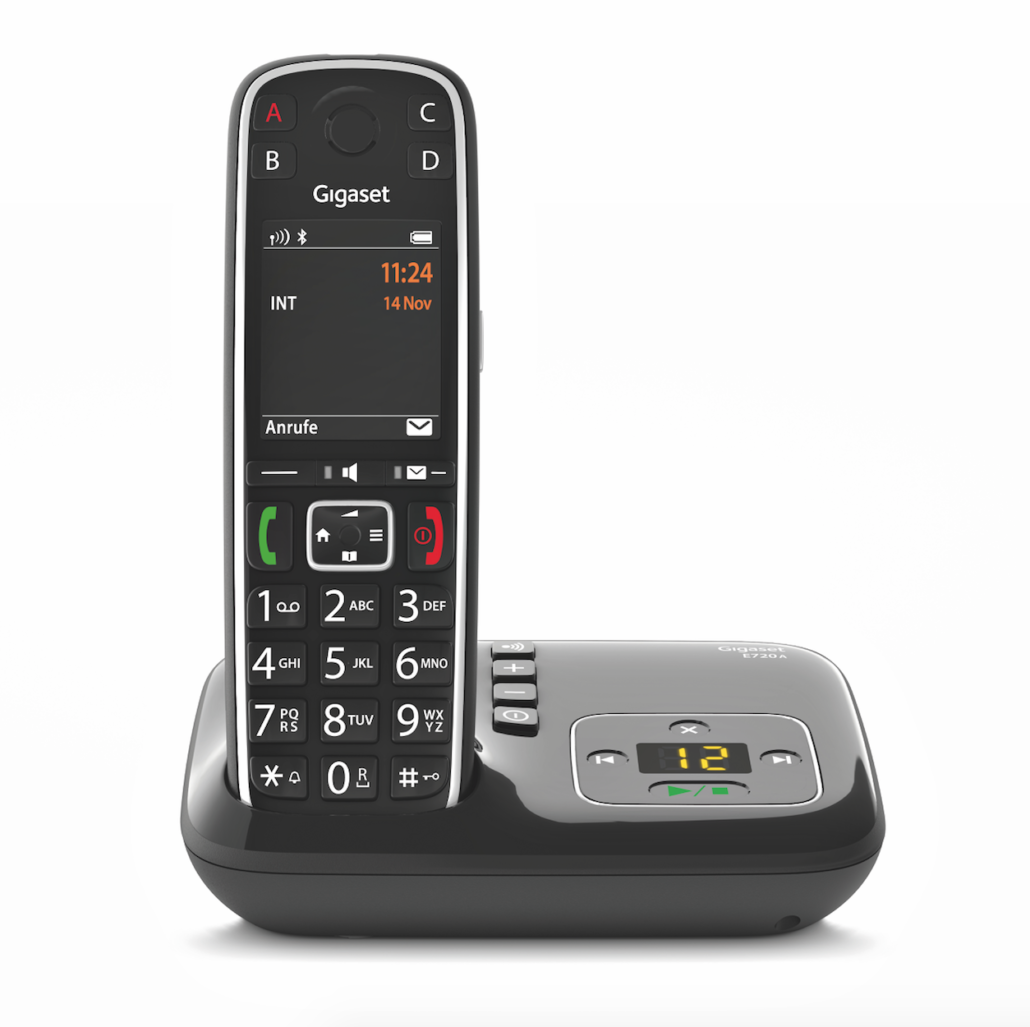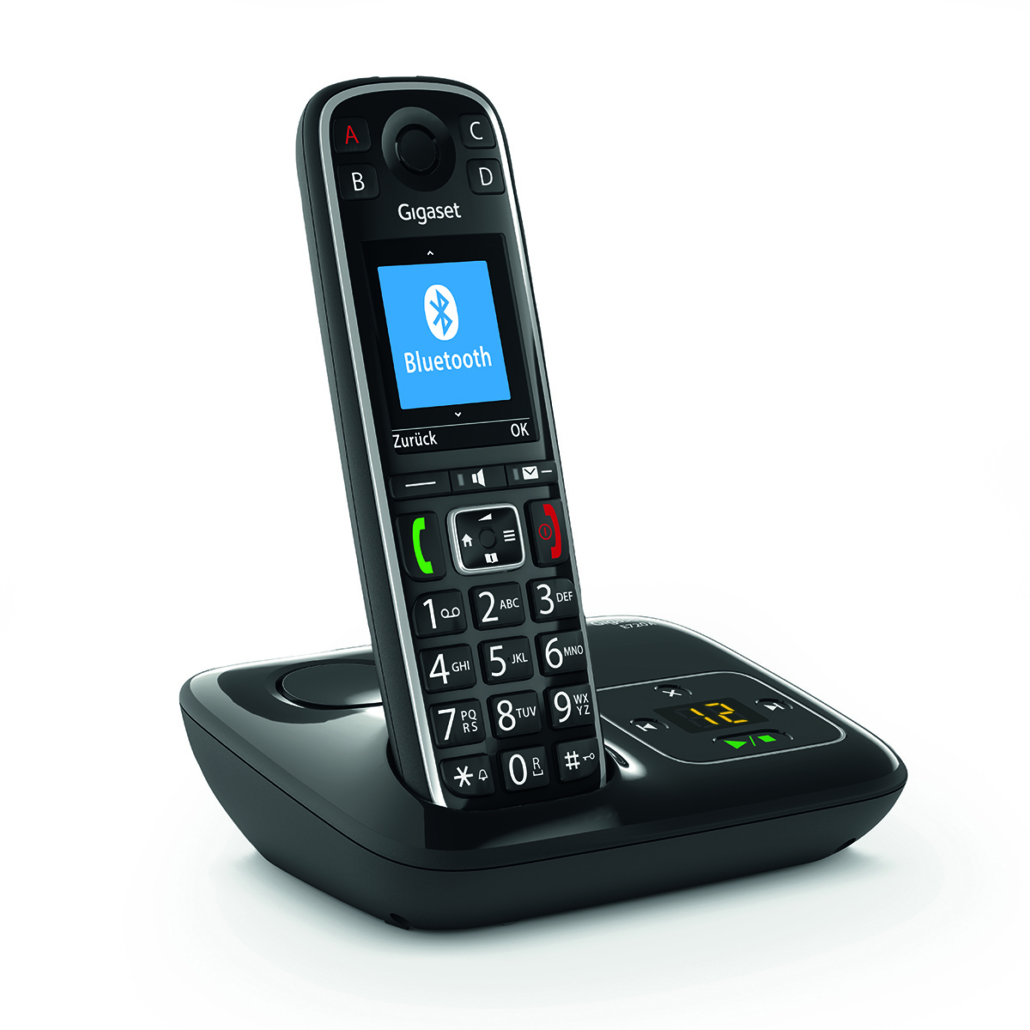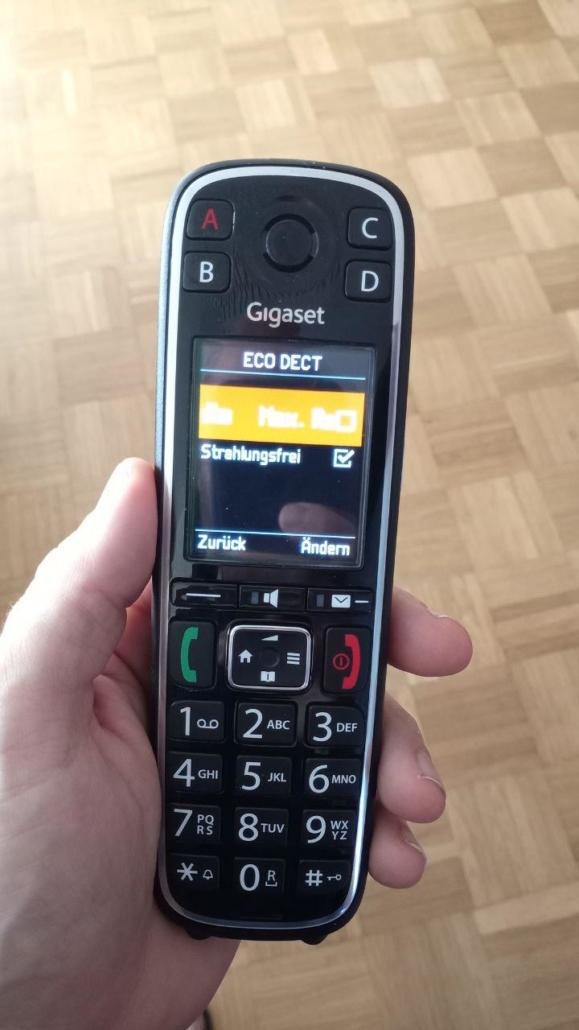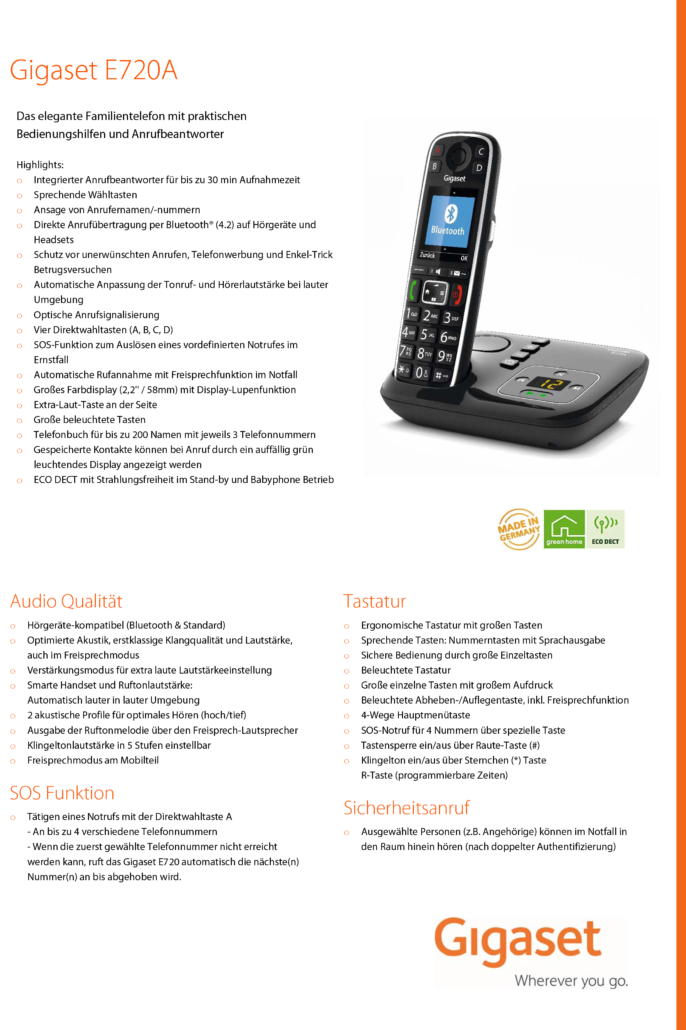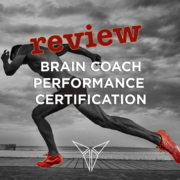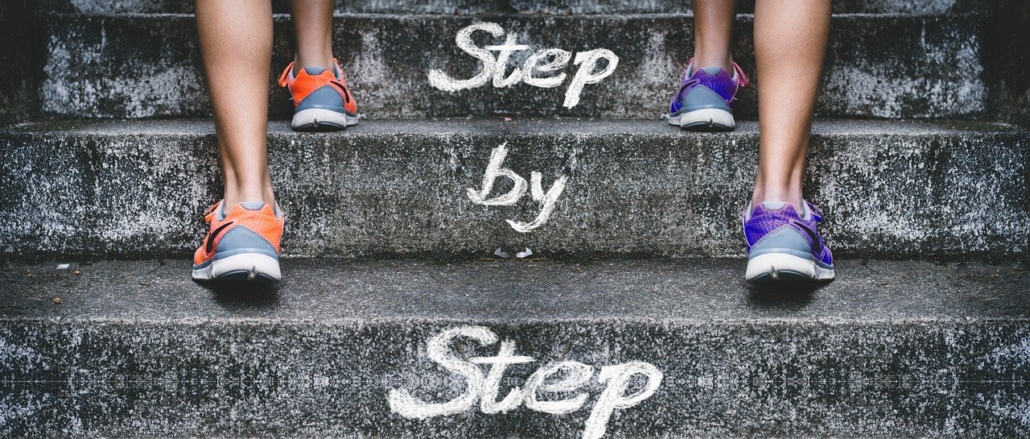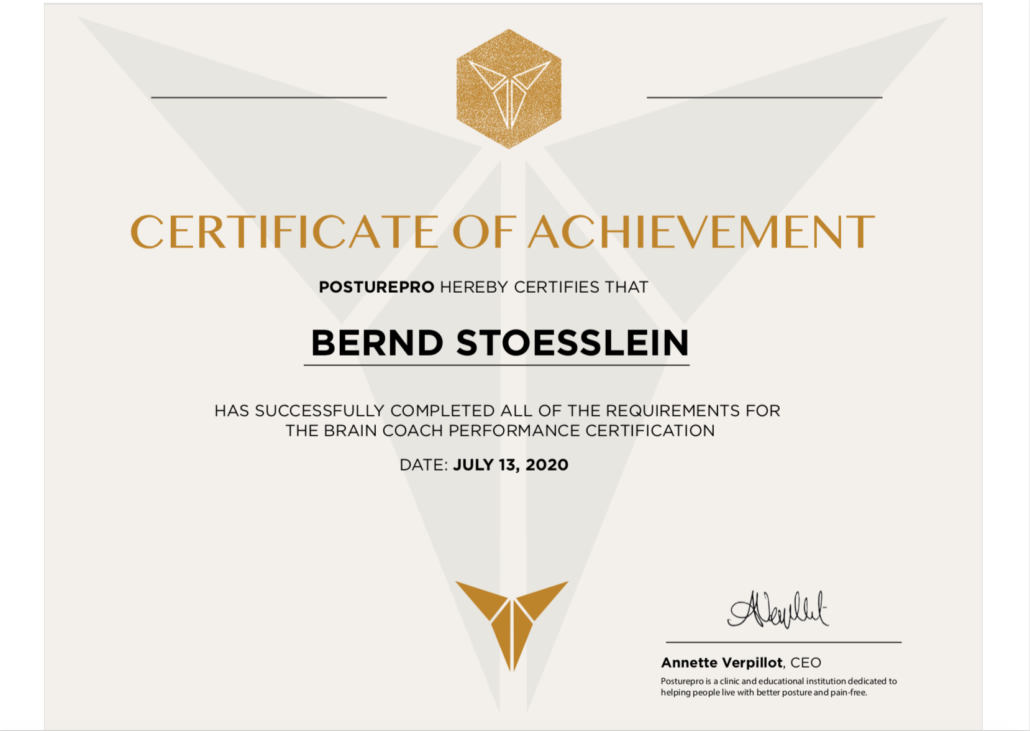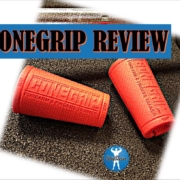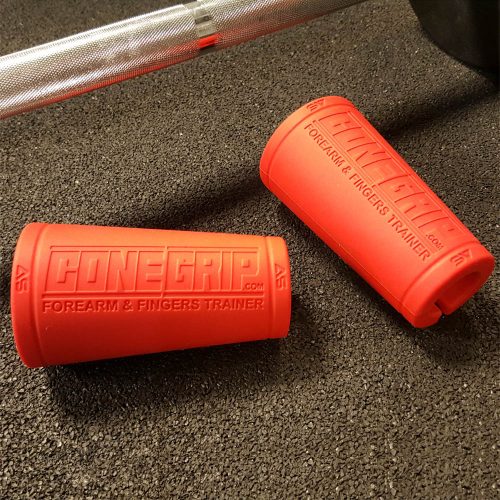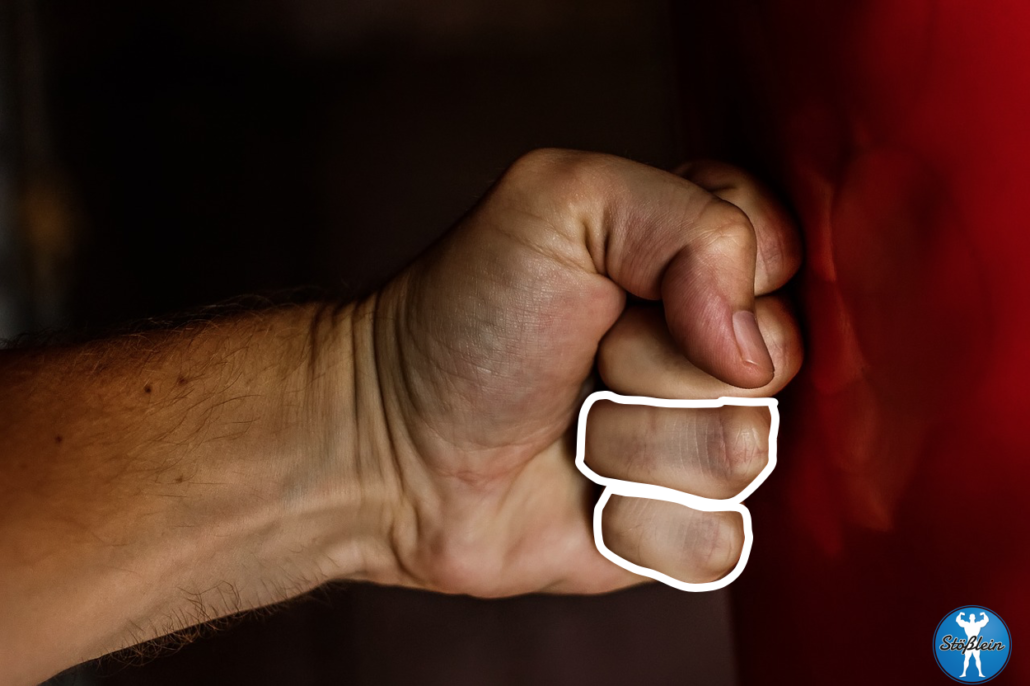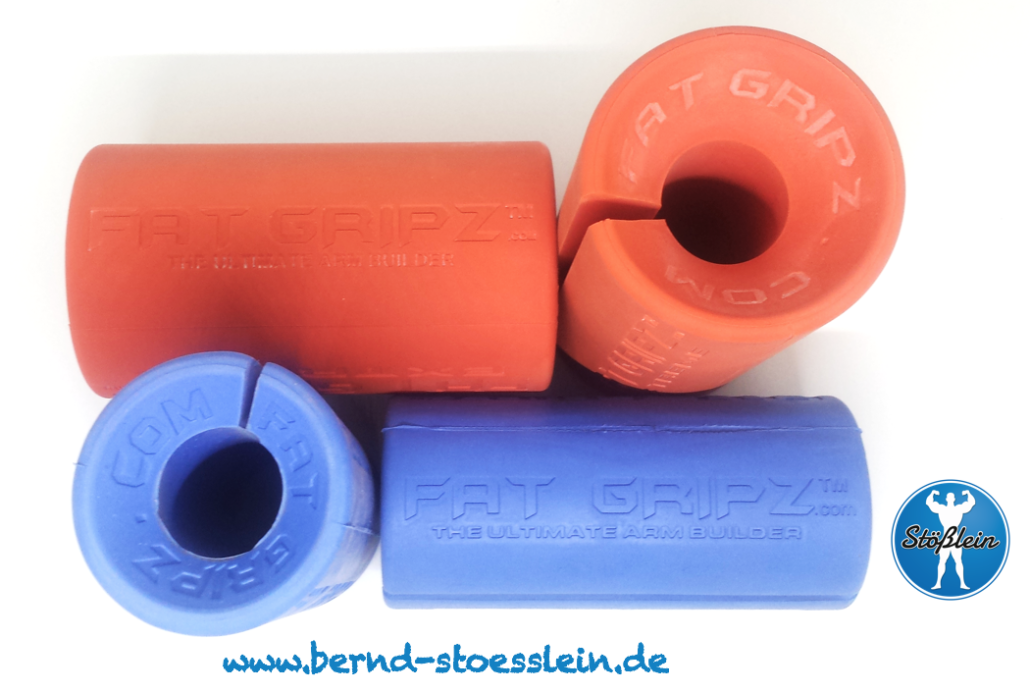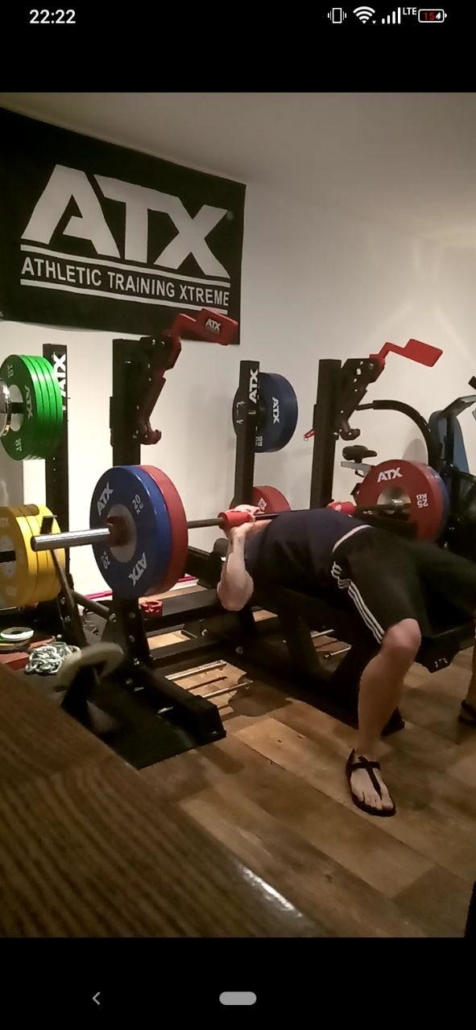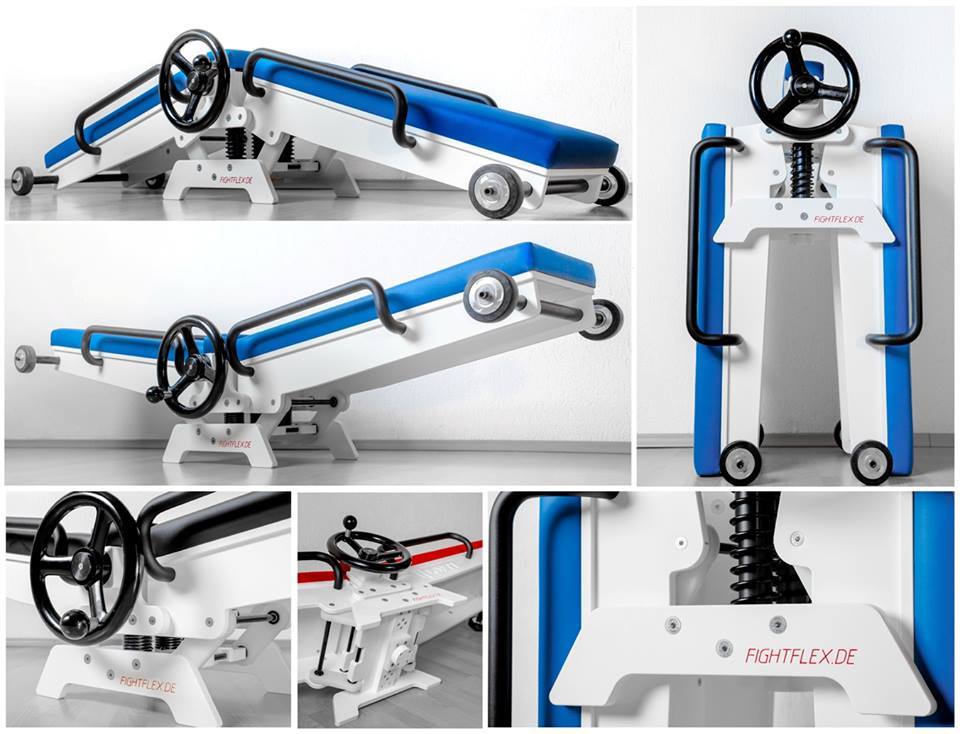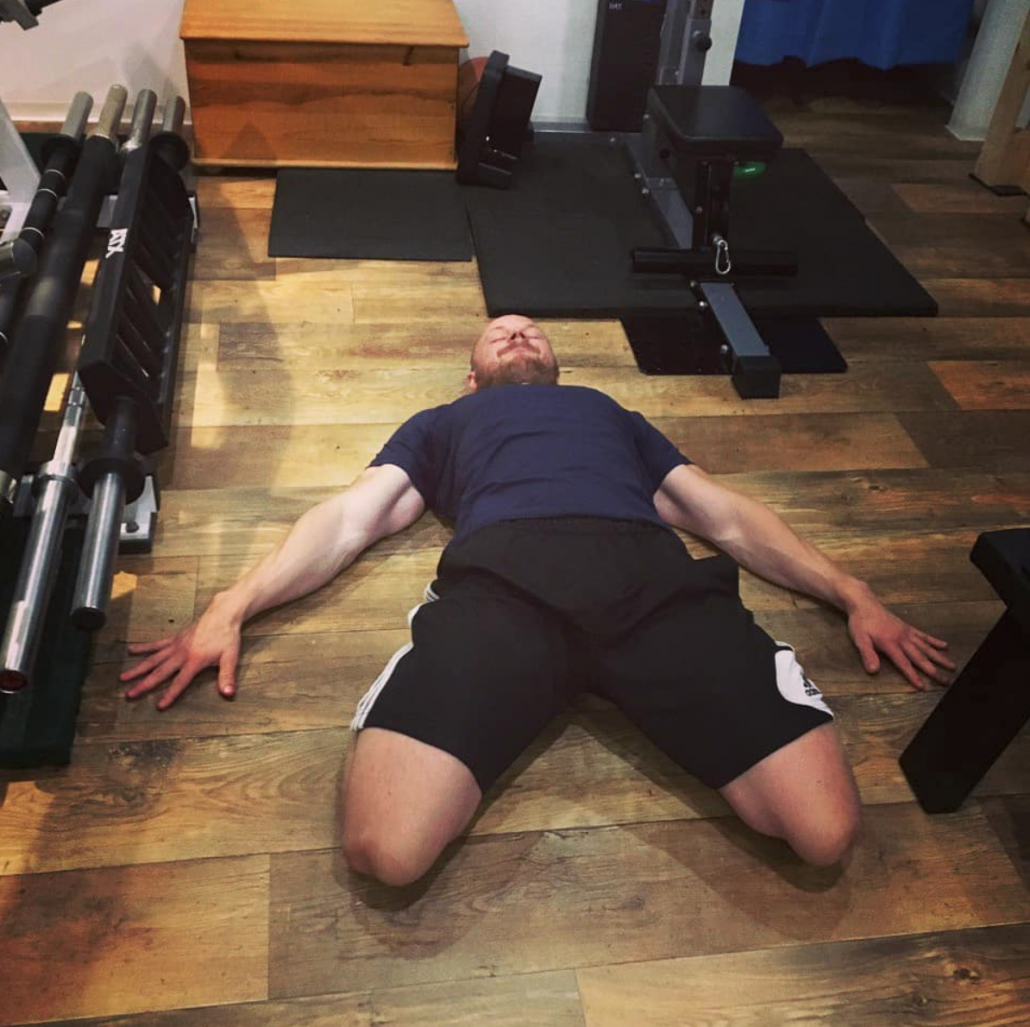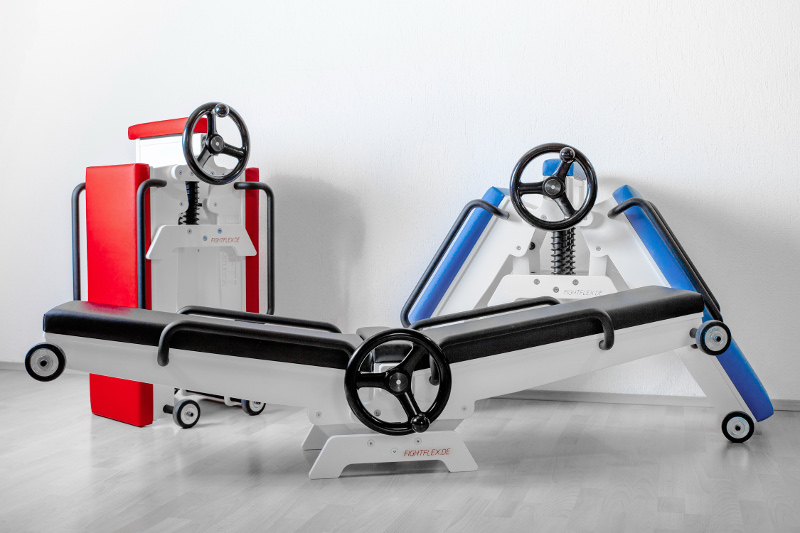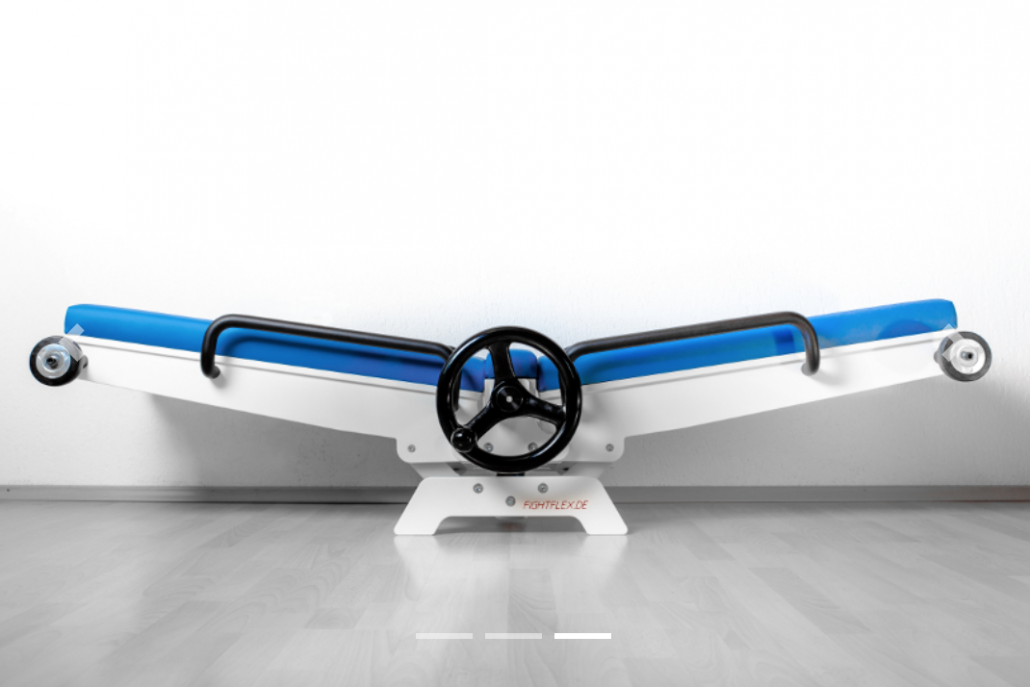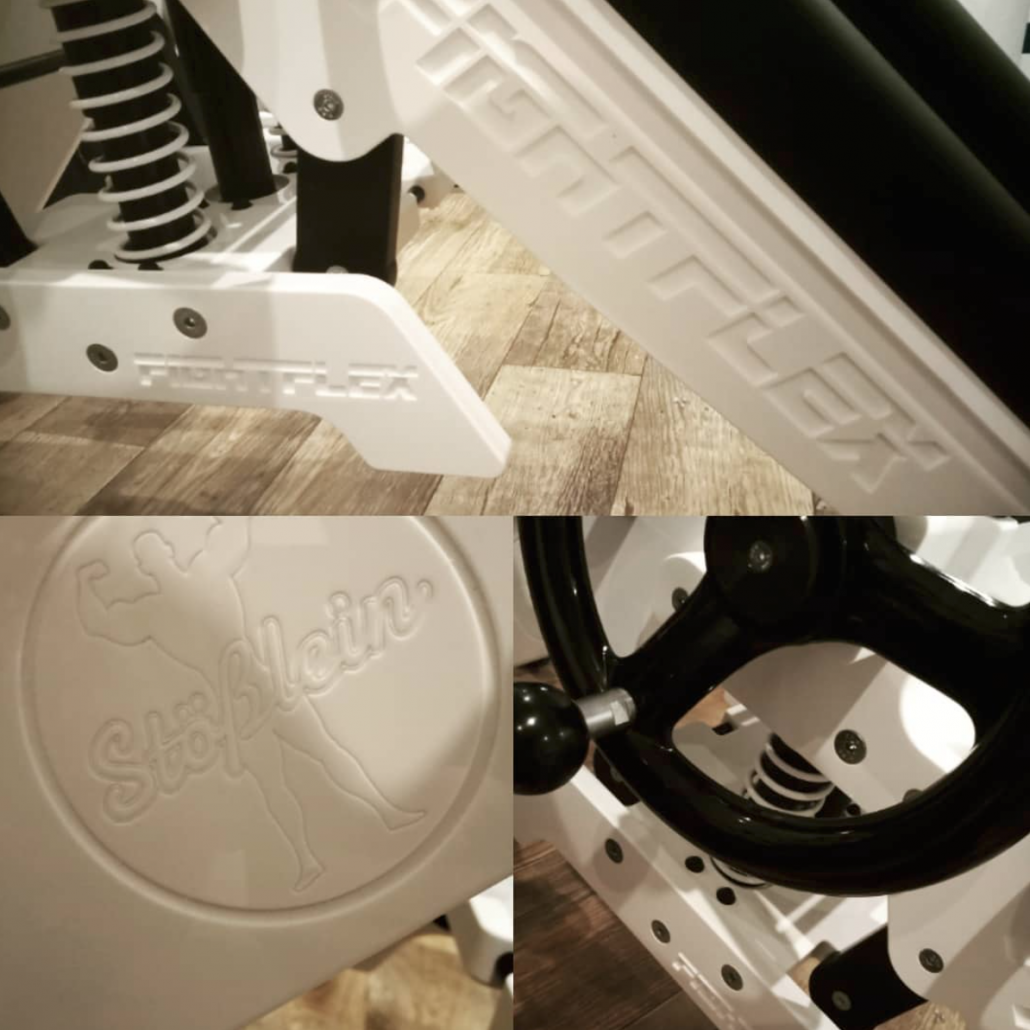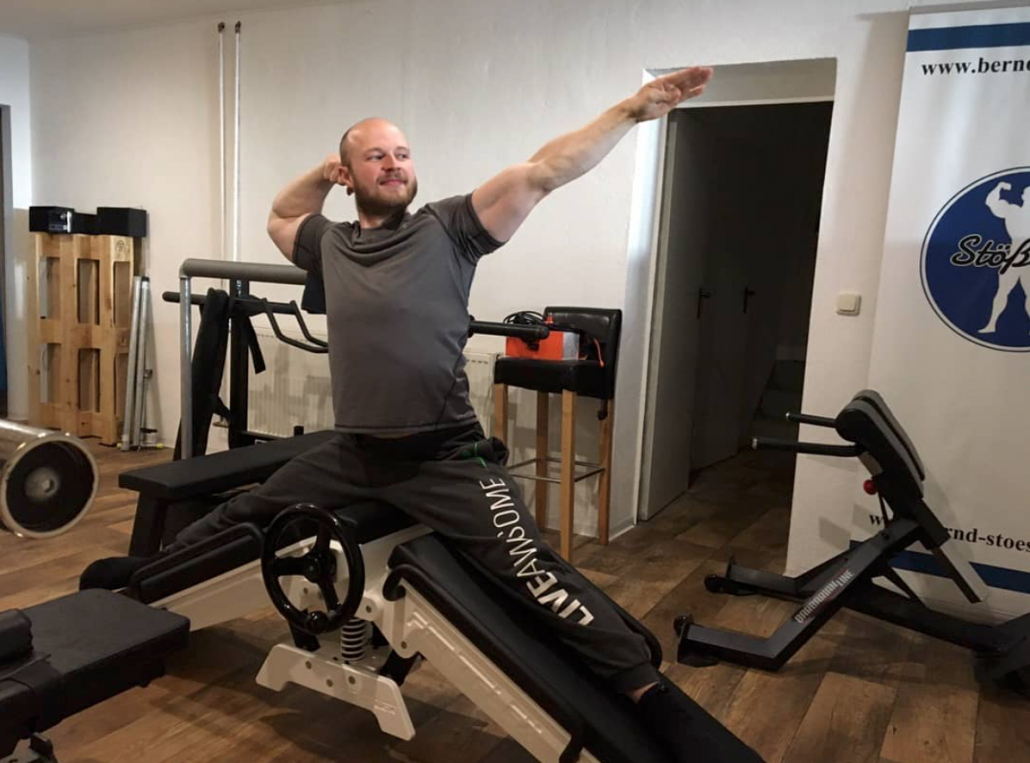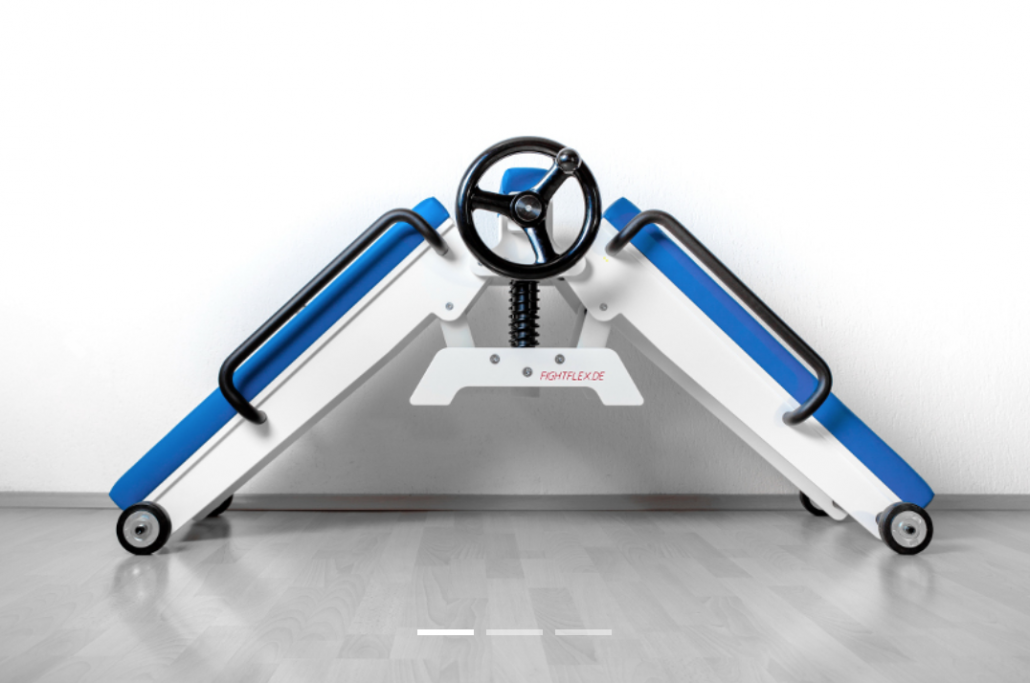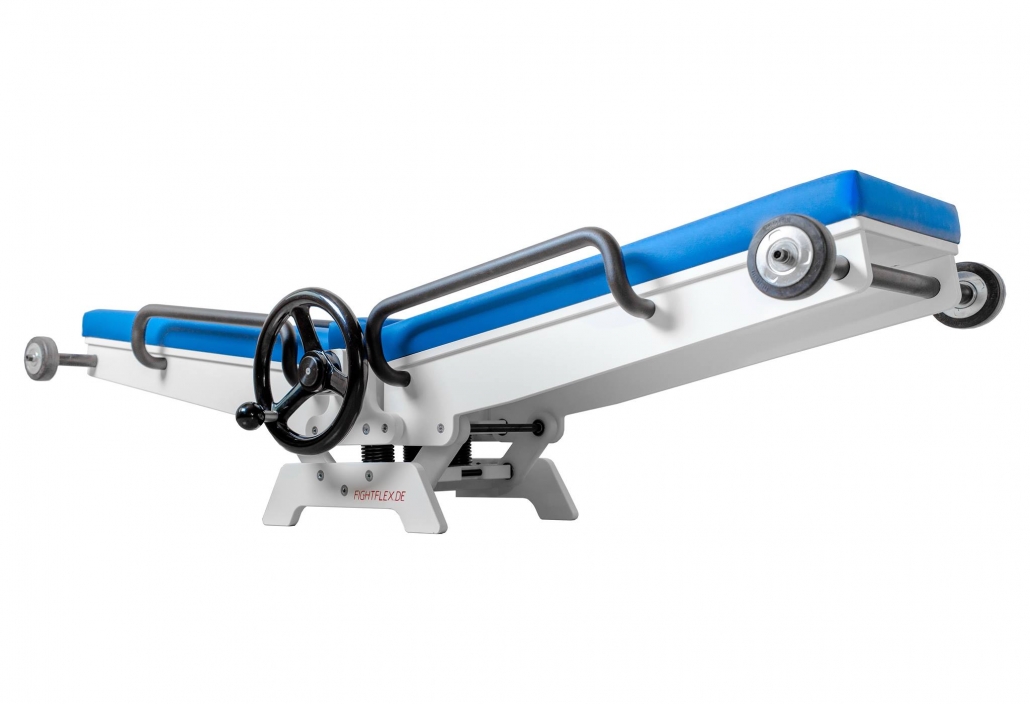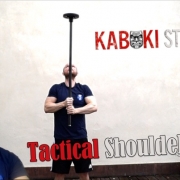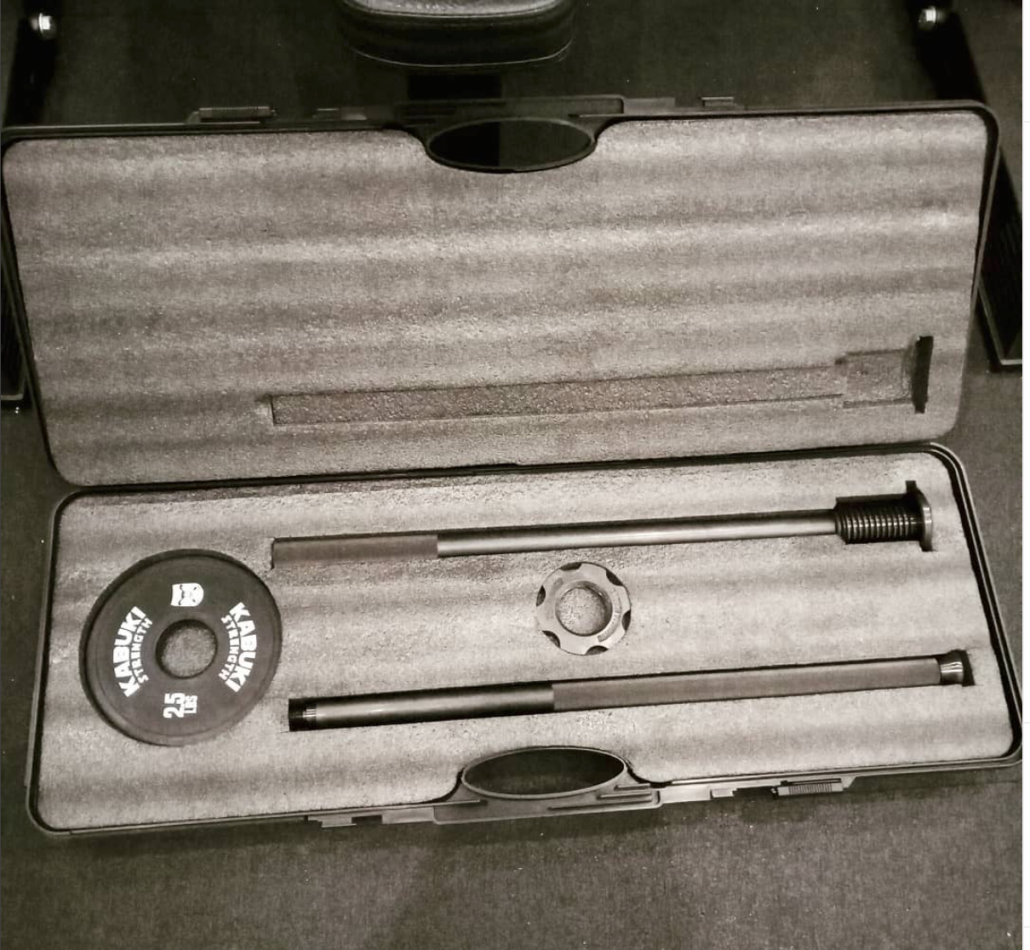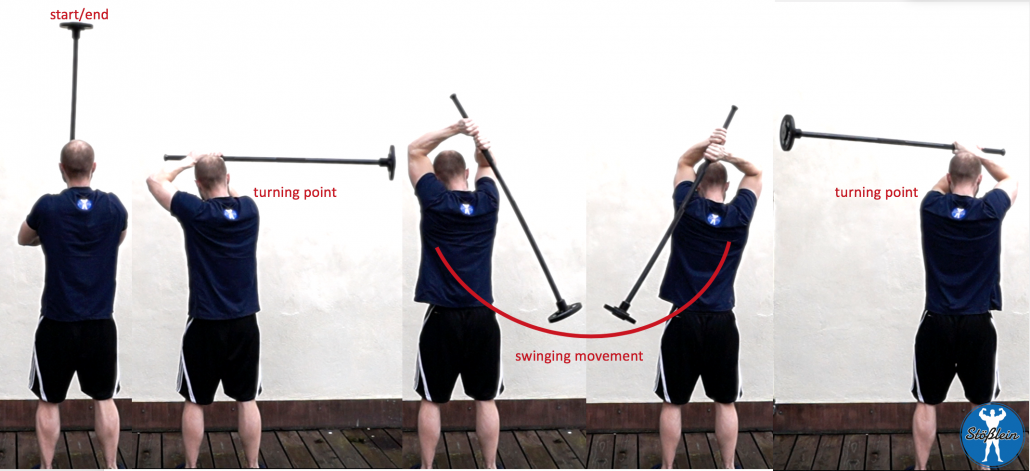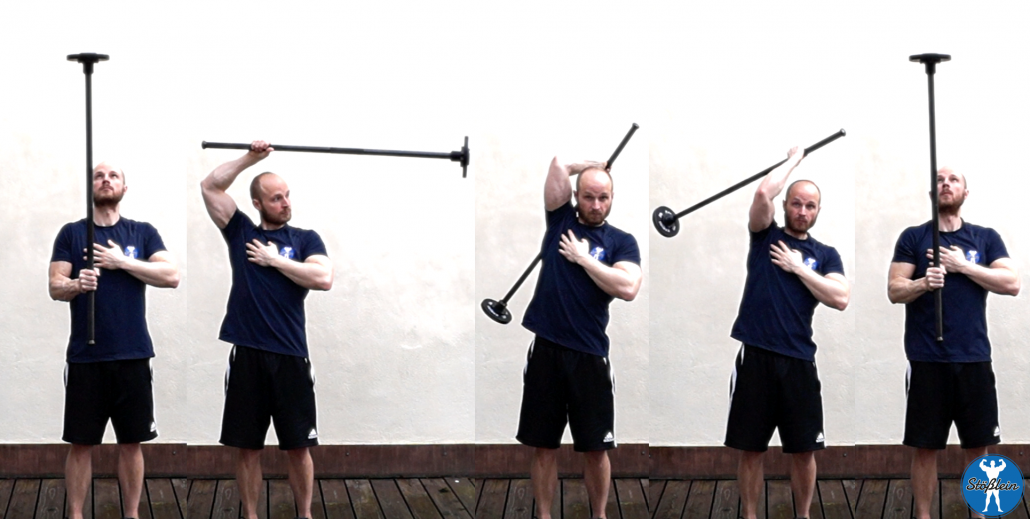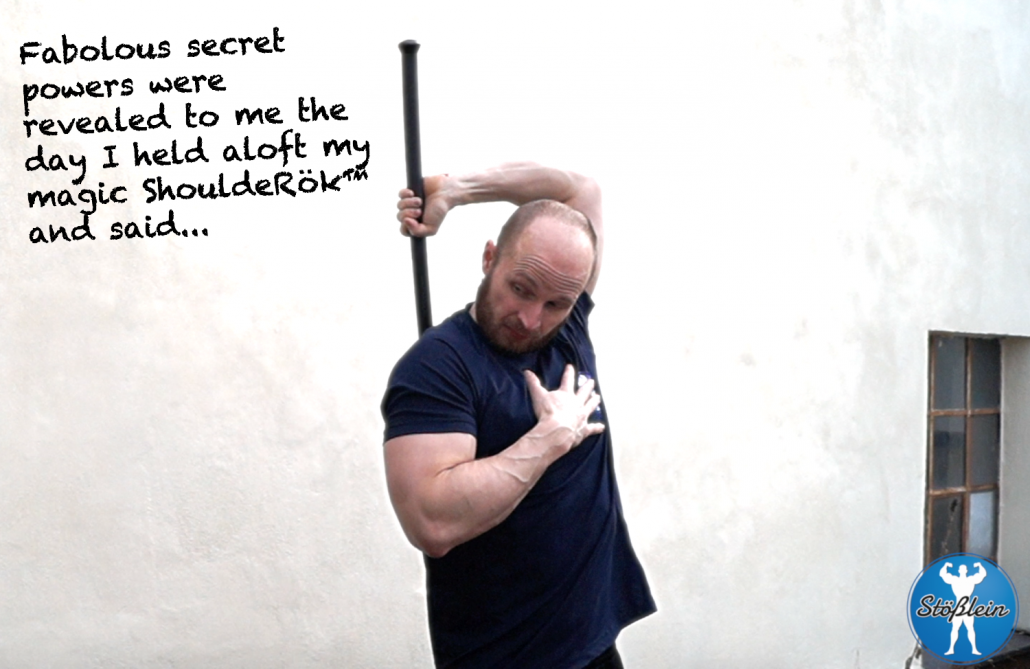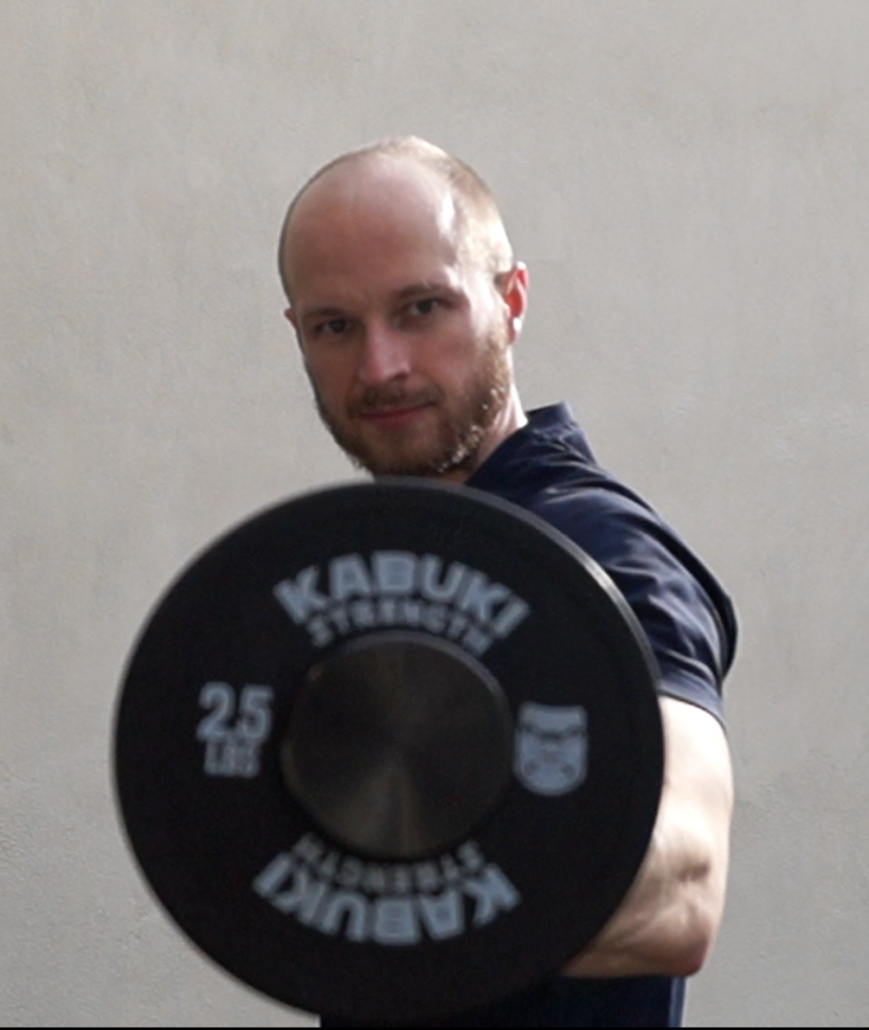BellaBambi multi (affiliate link) ist ein Gerät, das stufenlos einstellbaren Unterdruck von -130 mbar bis -280 mbar nutzt, um mittels unterschiedlich großer Saugglocken (Ø 20 mm und Ø 34 mm) einen Massageeffekt zu erzeugen. Es ist eine moderne Form der seit Jahrtausenden bekannten und immer noch angewandten Form des Schröpfens. Auch bekannt unter dem englischen Begriff „Cupping“. Die Saugglocken aus Biosilikon „Made in Germany“ von BellaBambi bieten, aus meiner Sicht, deutliche Vorteile gegenüber herkömmlichen Schröpfgefäßen aus Glas oder Plastik. In diesem Artikel erkläre ich, wie ich diese Form des Cuppings im Rahmen meiner “Stößlein Strength” Methode nutze, welche Effekte Schröpfen erzeugt, dessen unterschiedliche Herangehenswiesen und worauf man achten sollte!
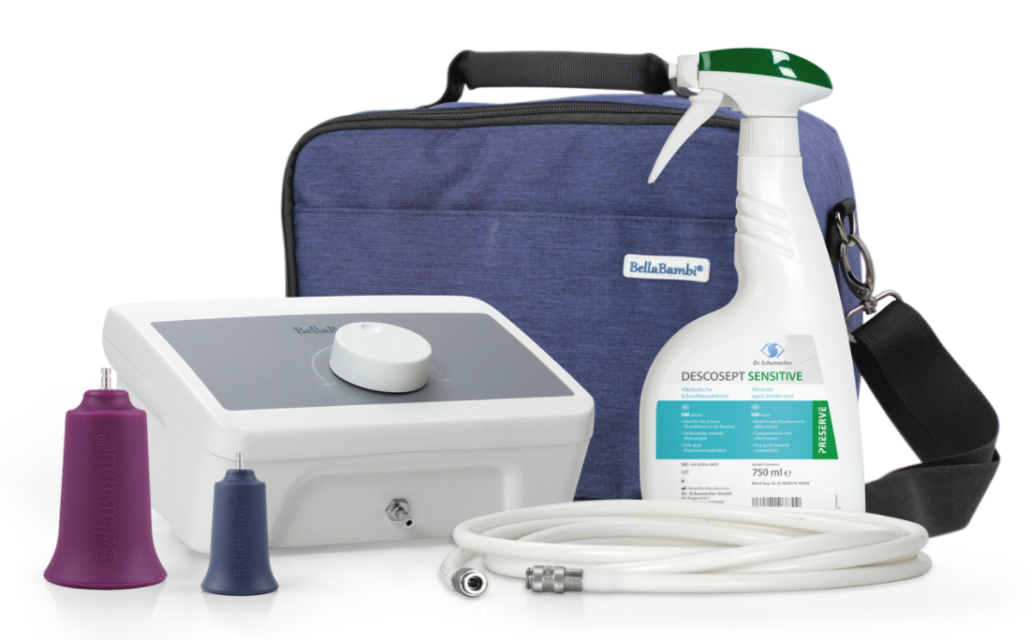
Die unterschiedlichen Arten des Schröpfens
Wenn man sich mit dem Thema des Cuppings beschäftigt, so begegnen einem die unterschiedlichsten Begriffe, die oftmals synonym gebraucht werden. Als da wären: Schröpfen (blutig, unblutig) sowie eben der englische Ausdruck „cupping“.
Letzterer stellt im Grunde nur den englischen Begriff für die deutsche Bezeichnung des Schröpfens dar. Dennoch unterscheiden sich die unterschiedlichen Schröpf- bzw. Cupping-Arten deutlich voneinander.
Traditionelles Schröpfen wird bereits seit Jahrhunderten oder gar Jahrtausenden angewandt und hat seinen Ursprung wohl, wie sehr Vieles, in der Traditionell Chinesischen Medizin (TCM).
Der Begriff Schröpfen ist übrigens ein ausschließlich hochdeutsches Wort, das „ritzen“ bzw. „zur Ader lassen“ bedeutet. Es ist in dieser Form seit dem 12. Jahrhundert belegt. (Grimm, 1854).
Es beschreibt auch die ursprüngliche Herangehensweise dieser Behandlung. Geschröpft wurde mit Gläsern in Glocken- oder Kugelform. Diesen Gefäßen wurde dann mittels Feuer der Sauerstoff entzogen, um einen Unterdruck für den Saugeffekt zu schaffen (siehe Bild).
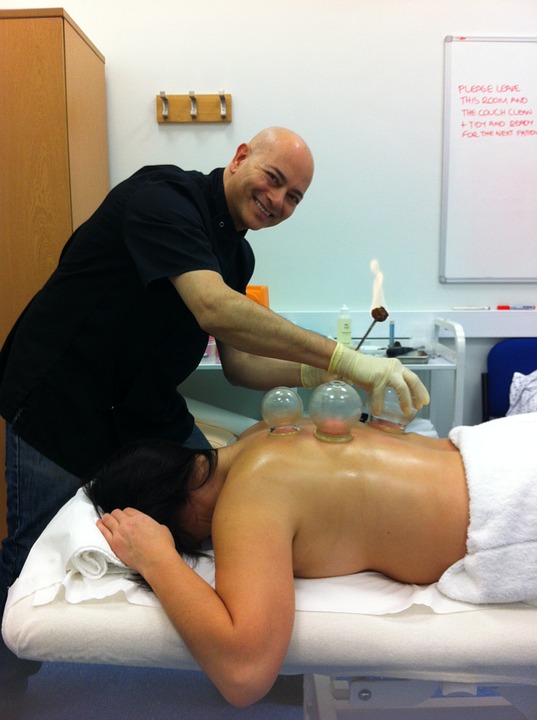
Beim blutigen Schröpfen wird der Unterdruck/Saugeffekt dann noch mit einer Art des „Aderlass“ gepaart. Hierzu werden kleine Schnitte in die Oberhaut gesetzt, um Beschwerdebereiche zu therapieren.
Da nicht wirklich an einer Ader invasiv gearbeitet wird (es wird keine Ader oder Vene verletzt), stellt auch blutiges Schröpfen praktisch keinen Aderlass dar. Dennoch findet dabei eine Verletzung der Haut statt, was einen sogenannten invasiven Eingriff darstellt.
Solche Eingriffe sind, zumindest in Deutschland, ausdrücklich nur Heilpraktikern und Ärzten gestattet und bedürfen VOR Behandlung der ausdrücklichen Einwilligung und Aufklärung des Patienten!
Alle anderen Anwender, denen es an diesen rechtlichen Befugnissen mangelt, machen sich strafbar, wenn sie trotzdem invasiv arbeiten. Nicht nur beim blutigen Schröpfen!
Ebendieses ist auch per Definition kein „Aderlass“, denn ein solcher findet erst ab einer entnommenen/ausgeleiteten Menge an Blut von mindestens 500ml statt.
Eine Menge, die beim blutigen Schröpfen (solange dies sach- und fachgerecht ausgeführt wird) nicht aus- bzw. auftritt. Anders, als z.B. bei der Blutegel-Therapie (Hirudotherapie).
Beim traditionellen Schröpfen verweilen die unterschiedlich großen Schröpfgefäße in der Regel an Ort und Stelle, was bei systemischer Anwendung am Körper den Gebrauch von vielen Schröpfgefäßen erfordert (siehe Bild).
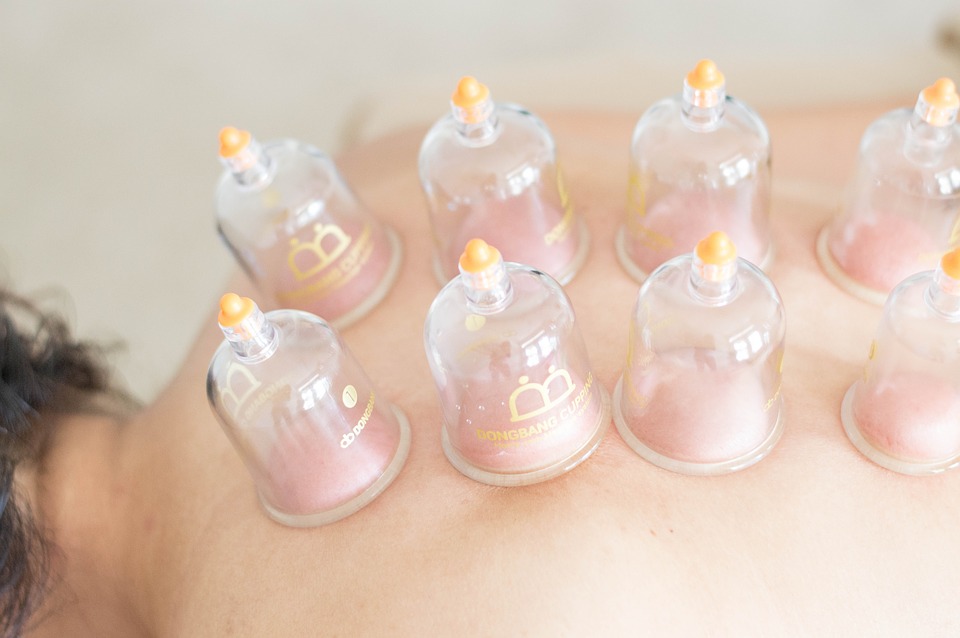
Wer sich heutzutage die nicht ganz ungefährliche Arbeit mit Feuer und Glasgefäßen sparen möchte, der greift meist auf Plastik-Saugglocken zurück, die mittels Handpumpe dann einen Unterdruck erzeugen (siehe Foto).
Es existieren aber auch Gläser/Plastikgefäße, die mittels kleinem „Saugball“ direkt am Gefäß einen Unterdruck erzeugen können (siehe Foto).
In den letzten Jahren erfreut sich das Cupping, meiner Beobachtung nach, eines regelrechten Booms.
Gefühlt jeder zweite Therapeut, gleich welcher Couleur, scheint insbesondere die Plastik-Saugglocken-Methode anzuwenden.
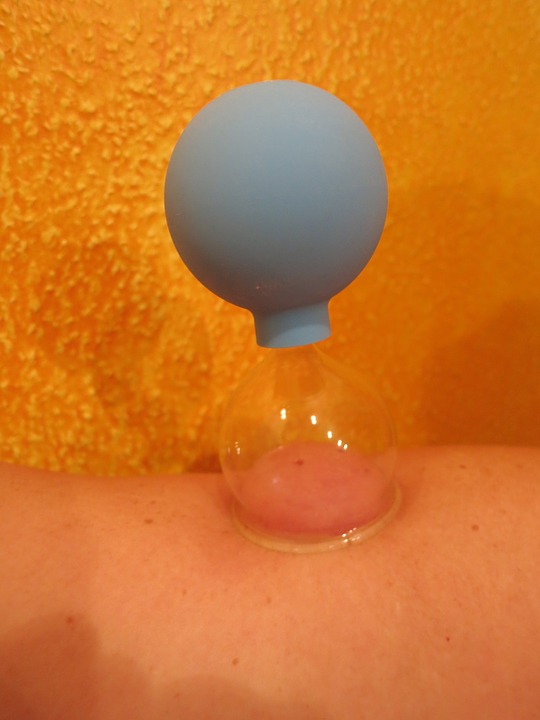
Wieso ich diese nicht so geeignet finde und welche bessere Alternative es aus meiner Sicht gibt, darüber spreche ich im folgenden Abschnitt.
Cupping – Vorteile durch Silikongefäße
Wie eben beschrieben, stellt die Methode der Wahl, bei den allermeisten Anwendern, das Plastikglas-Schröpfen dar.
Dieses bietet, im Vergleich zu Glas, natürlich den Vorteil, dass die Gefäße weniger leicht beschädigt werden können und natürlich auch nicht so leicht auf dem Angewendeten zerbrechen können.
Allerdings ist der Rand dieser Gefäße vergleichsweise dünn (siehe Fotos). Dies sorgt dafür, dass sich nach der Anwendung oft unnötig starke Ringmuster bilden, die mehrere Tage sichtbar sein können.
Vom optischen Aspekt mal abgesehen, bleibt fraglich, ob diese starken Abdrücke eine therapeutische Notwendigkeit darstellen oder das Gewebe nicht unnötig stark belasten, ohne einen Mehrwert zu bieten.
Logischerweise muss, bei Schröpfgläsern mit schmalem Rand, der stärkste Abdruck eben durch den Rand entstehen. Denn dort liegt das Gefäß nun mal auf der Haut auf, wenn der Unterdruck entsteht.
Mit Silikongefäßen kann dieses Problem, meiner Erfahrung nach, minimiert oder oft sogar eliminiert werden.
Saugglocken aus Silikon sind deutlich weicher als ihr Plastik- oder Glas-Pendant, was zunächst schon einmal das Verletzungsrisiko auf praktisch null senkt.
Des Weiteren bietet ein deutlich dickerer und weicherer Rand weniger Potential für ringförmige Druckstellen.
Darüber hinaus können die „Silikon-Sauger“ mit Unterdruck deutlich einfacher auf der Haut hin- und her bewegt werden. Müssen also nicht an Ort und Stelle verharren, was den Einsatz mehrere Gefäße nicht zwingend notwendig macht.
Mit Silikongefäßen, wie von BellaBambi (BB), kann also bequem eine sogenannte Schröpfkopfmassage (auch unter dem Begriff der Saugwellenmassage bekannt) durchgeführt werden.
Die kleinen Gefäße aus Silikon ermöglichen es zudem, sonst mittels Glas- oder harten Plastiksaugglocken, schwer zu erreichende Stellen einfach zu behandeln.
Natürlich kann auch hier die Anwendung mehrerer Silikon-Saugglocken nötig, respektive gewünscht sein, wenn ausdrücklich eine gezielte (topische) Anwendung anvisiert wird.
Als sehr praktisch und bequem in der Anwendung hat sich für mich das BellaBambi multi (affiliate link) erwiesen.
Dieses kleine Gerät erzeugt einen stufenlos verstellbaren Unterdruck im Bereich von -130 mbar bis -280 mbar (BellaBambi, 2020).
Dadurch kann man die Intensität je nach Schmerzempfindlichkeit des Patienten oder Klienten und je nach Stärke der Gewebeverklebungen (sog. Adhäsionen) individuell wählen, was einen hervorragenden Behandlungskomfort bietet.
Was geschieht beim Schröpfen?
Wieso weshalb warum, wer nicht fragt, bleibt dumm! Doch was machen die allermeisten Menschen, wenn sie heutzutage eine Frage haben? Sie suchen im Internet.
Meistens erhalten sie dann auch ziemlich weit oben in den Suchergebnissen einen Eintrag der Wikipedia, den sie dann natürlich auch lesen.
Werfen wir also einen kurzen Blick auf das, was sich als geistiger Erguss dort finden lässt:
„Schröpfen (lateinisch ventosatio) als lokales Blutsaugen ist ein traditionelles Therapieverfahren, bei dem auf einem begrenzten Hautareal ein Unterdruck aufgebracht wird. Es ist in der ganzen alten Welt von alters her bekannt.[1] Ein wissenschaftlicher Nachweis für eine medizinische Wirksamkeit des Schröpfens existiert nicht.[2] Das Schröpfen wird noch in der Alternativmedizin als ausleitendes Verfahren angewandt.[3]“ (Wikipedia, 2020).
Da man der Wikipedia, wie allen anderen Quellen im Internet übrigens auch, nicht blind vertrauen sollte, lohnt sich stets das kritische Hinterfragen aller Dinge.
Wenn diese online-Enzyklopädie also schreibt, „eine medizinische Wirksamkeit des Schröpfens existiert nicht“, dann nennt sie in ihrer Quelle den Artikel von Russel und Rovere von 2009, der sich lediglich mit den Auswirkungen des Cuppings auf Krebs beschäftigt hat!
Entsprechende Quelle habe ich unten in der Literaturangabe vermerkt.
Cupping stellt demnach also keine Hilfe gegen Krebs dar, was aber, aus meiner Sicht, keine Absage an Cupping allgemein als Behandlungsmethode für andere Beschwerden zu verstehen ist.
Wenn Cupping keine hilfreiche Methode wäre, dann hätte sie, meiner Meinung nach, auch nicht Tausende von Jahren überdauert, sondern wäre irgendwo und irgendwann in der sprichwörtlichen Versenkung verschwunden.
Cupping ist kein moderner Trend, sondern eine uralte Behandlungsmethode. Doch was geschieht eigentlich beim Cupping, respektive Schröpfen?
Durch das in den Gefäßen entstandene Vakuum wird das sich unter der Saugvorrichtung befindliche Gewebe angesogen. Dies sorgt für eine Irritation im Gewebe und eine stärkere Durchblutung, hervorgerufen durch die Sogwirkung.
Dieser Effekt erzeugt, je nach Länge und Intensität der Anwendung, kleine rote Pünktchen (sogenannte Petechien) im behandelten Hautareal und kann helfen, die Mikrozirkulation anzuregen.
Dadurch sollen, laut TCM, z.B. Muskelspasmen und Muskelschmerzen gelöst/gelindert werden können. Es soll die Muskelsteifigkeit herabgesetzt werden, die Mobilität steigern, die Durchblutung fördern und viele weitere Vorteile haben.
Auch sogenannte Adhäsionen (Verklebungen/Verhärtungen) der Muskulatur und der Faszien sollen gelöst werden können.
Ein nur 60kg schwerer Mensch besteht übrigens zu ca. 20kg aus Faszien, also etwa 1/3 des Gesamtgewichtes (Kiesling, 2020).
Im Buch von Gabriele Kiesling (“Schmerzfrei durch Cupping”) wird darüber hinaus z.B. auch die Behandlung an/um Narbengewebe beschrieben.
Narbengewebe stellt immer funktionsloses Ersatzgewebe dar. In der TCM stellen Narben nicht nur ein optisches „Manko“ dar, sondern sollen auch den Qi-Fluss behindern können.
Ein Grund mehr, ihnen bei der ordentlichen Heilung behilflich zu sein.
Achtung: Auf offenen oder frischen Narben sollte allerdings niemals Cupping/Schröpfen, gleich welcher Art, angewendet werden! Zu Kontraindikationen später mehr.
Wie reagieren Faszien auf Unterdruck?
Eine kurzes, animiertes und einfach zu begreifendes Video über Faszien und deren Reaktion auf Unterdruck durch Cupping findet man hier:
Wann setze ich das BellaBambi multi ein?
Das BellaBambi multi, respektive das Cupping setze ich meist im Rahmen meiner “Stößlein Strength” Methode ein. Eine Weiterentwicklung der sogenannten “Kinetic Chain Enhancement” Methode, die ich von meinem Strength Coach Mentor Charles R. Poliquin (R.I.P.), alias “Strength Sensei” erlernt hatte.
Zu Deutsch: „Steigerung/Erweiterung/Besserung der Kinetischen Kette“, eine nichtinvasive Behandlungstechnik, mithilfe derer tatsächlich sofort Mobilitätsbesserungen erzielt werden können.
Worum es sich dabei genau handelt, hatte ich bereits 2017 in zwei Erfahrungsberichten beschrieben:
Kinetic Chain Enhancement – Sofort mehr Mobilität
Kinetic Chain Enhancement – 7 Dinge, die ich gelernt habe
Diese Technik umfasst unterschiedliche Techniken wie z.B. Akupressur und Gua Sha.
Im Rahmen meiner Tätigkeit als Heilpraktiker, habe ich diese Technik weiterentwickelt bzw. um weitere Techniken wie z.B. Akupunktur, frequenzspezifischen Mikrostrom, Low Level Laser-Therapie, Rotlicht und eben Cupping erweitert. Daraus resultiert nun meine ganz eigene Technik, namens “Stößlein Strength”.
Somit ist der, wie Dr. Hartmut Fischer ihn nennt, „Gesundheitswerkzeugkasten“ um viele tolle „Werkzeuge“ und Methoden im Laufe der Jahre gewachsen. Denn wenn man nur einen Hammer hat, sieht sprichwörtlich gesehen alles aus wie ein Nagel…
Insbesondere Gua Sha und Cupping lassen sich, aus meiner Sicht, hervorragend miteinander kombinieren, um noch bessere Ergebnisse hinsichtlich Mobilitätssteigerung zu erreichen.
Behandlungen, aber auch das Erlernen dieser Techniken, kann jederzeit bei mir gebucht werden über meine Heilpraktiker-Praxis, unter:
info@heilpraktiker-stoesslein.de
Die perfekte Cupping Technik?
Für das „perfekte“ Cupping mit dem BellaBambi (BB) multi (affiliate link), respektive den BB Cups, ist es aus meiner Sicht hilfreich, eine bestimmte Zugtechnik anzuwenden.
Die von mir angewandte Technik kann sowohl für die kleinen (Ø 20 mm), die großen Saugglocken (Ø 34 mm) als auch für alle Intensitätsstufen genutzt werden.
Also, wie in diesem Artikel gezeigt, mittels BellaBambi multi oder ebenfalls mit den nicht maschinellen Cupping-Saugglocken.
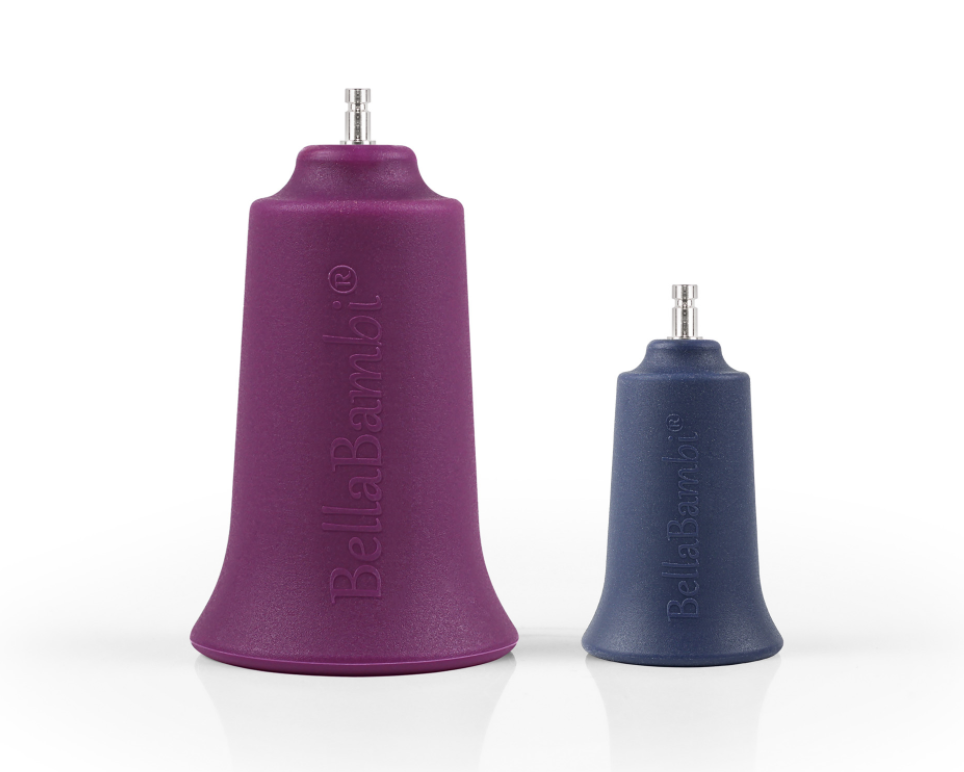
Wie bereits beschrieben, bieten die BB Cups die Möglichkeit, dass man sie nicht nur an Ort und Stelle belässt, sondern dass man diese auch über die Haut hin- und her bewegen kann.
Durch den Unterdruck, den das Gerät erzeugt, verformt sich der Cup. Genau an diesem Punkt, an dem sich der Cup zusammenzieht greife ich diesen, um ihn dann auf der Haut umherzubewegen (siehe Foto).

Die Zugrichtung sollte, aus meiner Sicht, entlang des Faserverlaufes der jeweiligen Muskeln bzw. Muskelgruppen erfolgen.
Das Cupping kann mit oder ohne Gleitmittel genutzt werden. Wie bei der Gua Sha-Behandlung nutze ich meist natives Kokosöl (affiliate link).
Die Frage nach der Intensität – Nach fest kommt ab?
Natürlich stellt sich jetzt die Frage nach der Intensität der Cupping-Behandlung.
Die Autorin des Buches „Schmerzfrei durch Cupping“ (affiliate link), Gabriele Kiesling, spricht von einem „Wohlschmerz“, den sie auf einer aufsteigenden Schmerz- Skala von 1-10 ideal mit 3 einstuft.
Letztlich ist die Schmerzwahrnehmung aber eine höchst individuelle Sache und auch davon abhängig, welcher Körperteil gerade behandelt wird und wie stark dieser mit Schmerz- (Nozizeptoren) und anderen Sensoren „besiedelt“ ist.
Diskutiert werden kann ebenfalls, wie sehr sich die Haut durch die Behandlung verändern sollte.
Aber auch dies ist, meiner Erfahrung nach, von vielen Faktoren abhängig. So z.B.:
- Entzündungswerte im Körper (oft sehr hoch durch den Verzehr von Omega 6-lastigen Ölen, wie Raps- oder Sonnenblumenöl)
- Ernährung (Fast Food wie Zucker, Pizza, Pasta, Pommes, Margarine, Transfette etc.)
- Medikamenteneinnahme
- Erkrankungen (Allergien, Hautunverträglichkeiten, Hauterkrankungen usw.)
- Bewegungsverhalten (sehr viel oder wenig Muskeltraining)
- Verletzungen und Narbengewebe
- Bewegungseinschränkungen
- Strukturelle Balance
- Emotionaler Anatomie
- Verhärtungen/Verklebungen (Adhäsionen)
Auftreten kann also vieles. Subjektiv starker Schmerz ohne Hautrötungen (Petechien), aber auch subjektiv niedriger oder gar kein Schmerz mit sehr starken Hautverfärbungen von dunkelrot bis hin zu bläulichen Blutergüssen (Hämatomen).
In der Regel klingen diese Reaktionen auf das Schröpfen dann aber binnen 48-72 Stunden wieder ab.
Die Verfärbung kann also nicht immer als Indikator herangezogen werden, um zu beurteilen, was genau im Gewebe vor sich geht.
Aus meiner Erfahrung kann ich aber sagen, dass insbesondere Kraftsportler, die viel Zeit „am Eisen“ verbringen, zu vielen Bewegungseinschränkungen neigen, nicht zuletzt aufgrund von Adhäsionen.
Gleiches gilt aber für alle, die oft stark körperlich, aber auch monoton arbeiten. Also immer ähnliche/gleiche Bewegungsmuster haben.
Dadurch kommt es zu Stoffwechselabbauprodukten, die mitunter dazu beitragen, Adhäsionen zu erzeugen. Diese werden dann durch die farbliche Veränderung der Haut deutlich erkennbar.
Zudem bin ich der Meinung, dass sich gerade auch im Sehnen-Bereich (Muskelansatz-Bereich) für den erfahrenen Therapeuten am Klang erkennen lässt, ob und wie stark das Gewebe „verklebt“ ist.
Weichteilgewebe, das einen „knorpelig-kratzenden“ Ton bei der Behandlung von sich gibt, weist, meiner Expertise nach, eine tendenziell starke „Verfilzung“ bzw. „Verklebung“ auf und bedarf einer Behandlung, um dem beteiligten Gelenk wieder seinen optimalen Bewegungsradius zurückzugeben.
Cupping Kontraindikationen
Natürlich ist Cupping, wie jede andere Behandlungsmethode auch, kein Allheilmittel. Es gilt auch hier einige Kontraindikationen zu beachten.
Ich würde vom Cupping/Schröpfen abraten bei/an:
- Frischen und/oder offenen Wunden
- Unqualifiziertem Personal, das blutiges Schröpfen anwenden will
- Brustwarzen
- Augen
- Geschlechtsteilen
- After
- Hautveränderungen wie Warzen, starken Leberflecken usw.
- Starken Hauterkrankungen direkt am betroffenen Gewebe (z.B. Neurodermitis)
- Etc.
Alternative/Ergänzung
Eine tolle Ergänzung zum BellaBambi multi sind übrigens die manuellen Cups! Diese gibt es ebenfalls in unterschiedlichen Stärken und Größen. Von “Sensitive” (Gelb), über “Regular” (Orange), bis hin zu “Intense” (Rot).
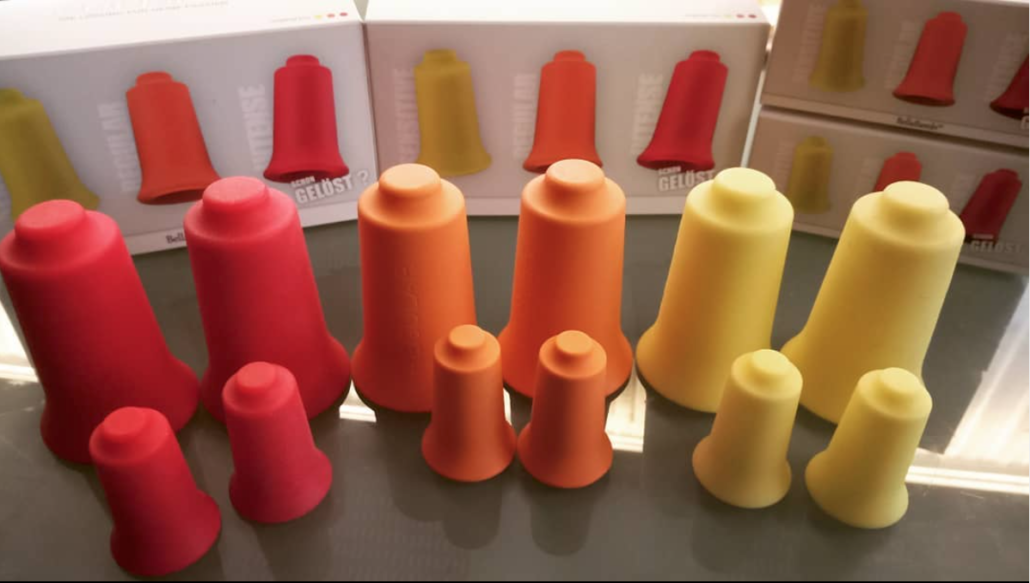
Fazit/Conclusio BellaBambi multi
Das BellaBambi multi (affiliate link) ist für alle, die professionell Schröpfen wollen, meiner Expertise nach, eine echte Investition. Natürlich liegt es, im Vergleich zu herkömmlichen Cupping-Sets etwas höher im Preis, dafür bietet es aber ein deutlich größeres Anwendungsspektrum!
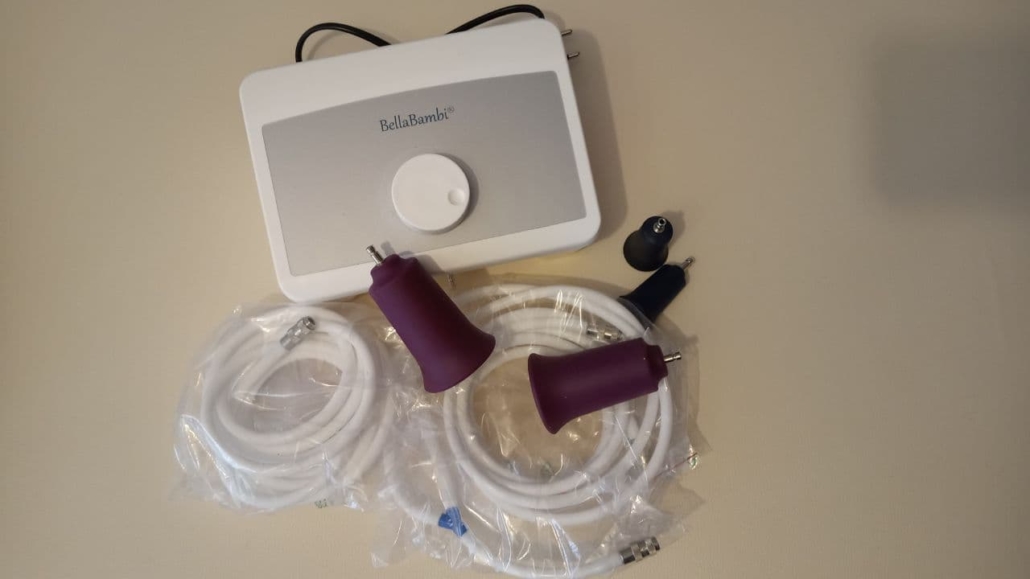
Durch die weichen Saugglocken aus Biosilikon in unterschiedlichen Größen kann man perfekt auch die Körperstellen bearbeiten, an denen das Schröpfen sonst vergleichsweise schwer fällt, wie etwa den Fingern, Zehen oder im Gesicht.
Die Cups von BellaBambi passen sich durch ihre Flexibilität perfekt der Haut an, sind einfach und schnell zu reinigen, was insbesondere den professionellen Einsatz in einer Praxis sehr komfortabel und schnell gestaltet.
Aber auch für Heimanwender ist diese Methode des Schröpfens gut geeignet. Wer nicht gleich mit einem BB multi beginnen möchte, dem empfehle ich mit einem der BellaBambi Starter-Sets loszulegen!
Cupping bzw. Schröpfen ist eine Jahrhunderte, wenn nicht gar Jahrtausende alte Behandlungsmethode, die selbst bei uns in Deutschland bereits seit mindestens dem 12. Jahrhundert bekannt ist.
In Therapie und Praxis haben die Dinge Bestand, die einfach, effektiv, jedem leicht zugänglich und kostengünstig sind. Schröpfen/Cupping ist so ein „Werkzeug“, mit dem die Gesundheit wieder ein Stück in die eigenen Hände gelegt werden kann.
Doch gute Dinge aus der Vergangenheit können durch modernes Wissen auch optimiert werden.
So geschehen durch die BellaBambi Silikon-Cups, Made in Germany! Für mich die deutlich bessere Alternative zu herkömmlichen Schröpfgefäßen aus Plastik oder Glas!
Solange einige Grundregeln und Kontraindikationen beachtet werden, stellt das Cupping wohl keine große Gefahr dar und man kann im Prinzip wenig falsch machen (von blutigem Schröpfen abgesehen!).
Wenn sich der geneigte Leser für eine Behandlung durch Cupping/Schröpfen interessiert, dann weise ich an dieser Stelle gerne auf die Kooperation mit meiner Naturheilpraxis hin.
Wenn dir dieser Artikel gefallen hat, dann teile ihn mit deinen Freunden, abonniere den Blog/Newsletter und hinterlasse einen Kommentar.
© HP Bernd Stößlein MBA in Sportmanagement
In diesem und anderen Artikeln findest du den ein oder anderen „Affiliate Link“, zu amazon. Wenn du über diesen Link etwas erwirbst, dann unterstützt du damit meine Blogartikel und schaffst Ressourcen für weitere qualitativ hochwertige Recherchen und Artikel wie diesen. Es entstehen für dich dadurch keine Mehrkosten! Alle meine grundsätzlichen Empfehlungen findest du unter: https://www.amazon.de/shop/bernd_stoesslein
Literatur
Schröpfen, Quelle: Deutsches Wörterbuch von Jacob und Wilhelm Grimm. 16 Bde. in 32 Teilbänden. Leipzig 1854-1961. Quellenverzeichnis Leipzig 1971. Online-Version vom 17.12.2020, http://woerterbuchnetz.de/cgi-bin/WBNetz/wbgui_py?sigle=DWB&mode=Vernetzung&lemid=GS17861#XGS17861, Zugriff v. 17.12.20.
Schröpfen, Quelle: https://de.wikipedia.org/wiki/Schr%C3%B6pfen, Zugriff v. 17.12.20.
Schmerzfrei durch Cupping, S. 19.
BellaBambi multi, Quelle: https://bellabambi.de/produkt/bellabambi-multi/, Zugriff v. 21.12.20.
Russell J.; Rovere A.: Cupping. In: American Cancer Society (Hrsg.): Complete Guide to Complementary and Alternative Cancer Therapies. 2. Auflage. 2009, ISBN 978-0-944235-71-3, S. 189–191.

